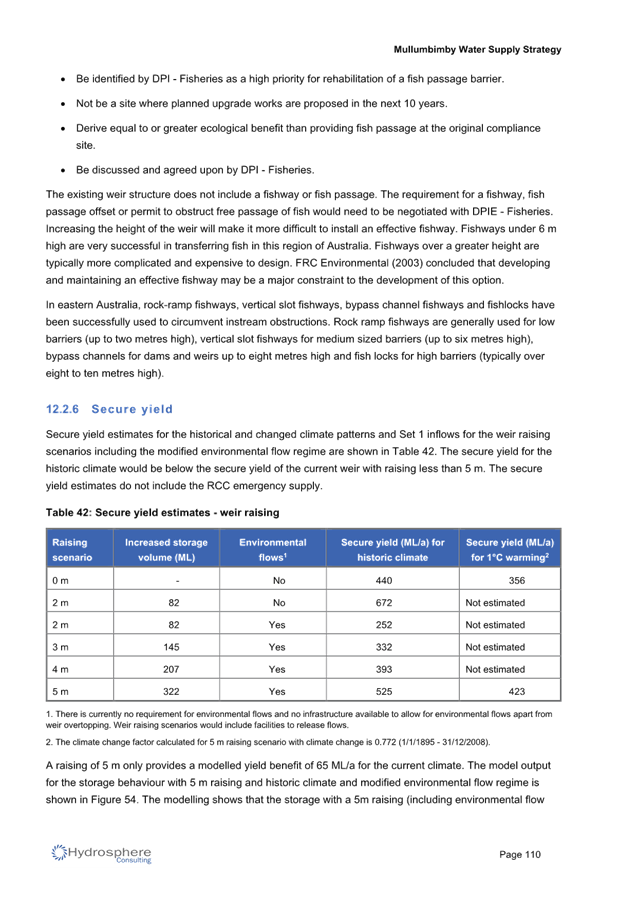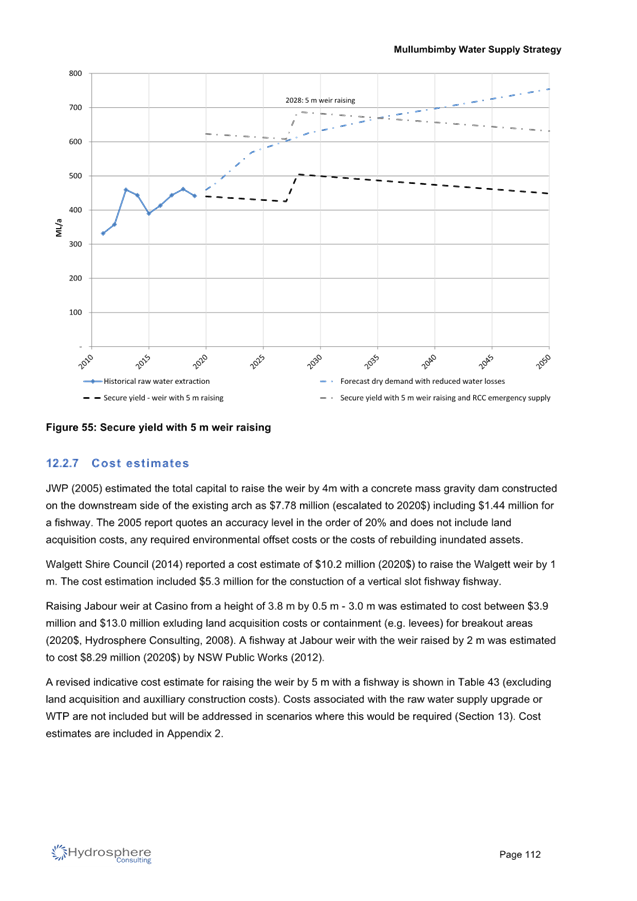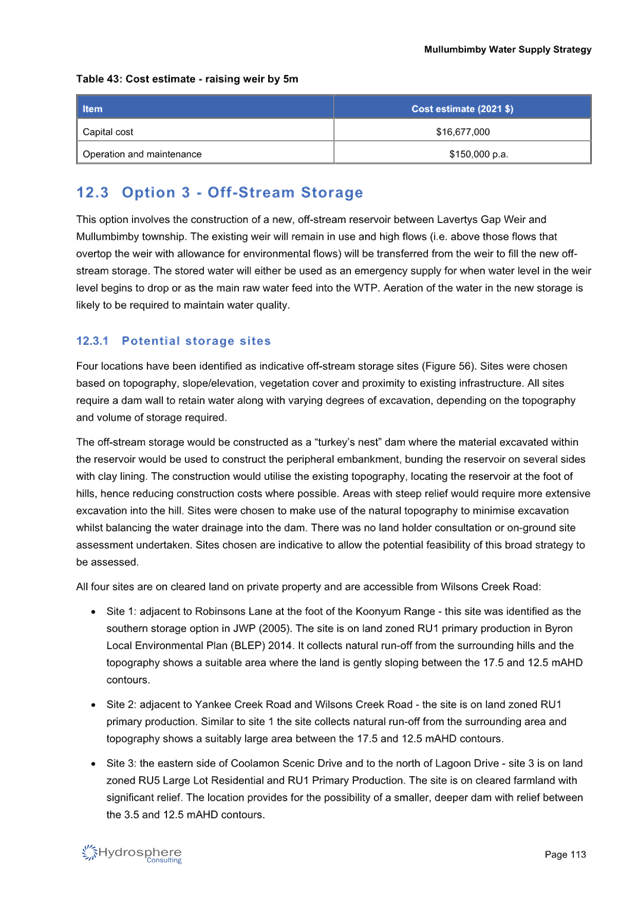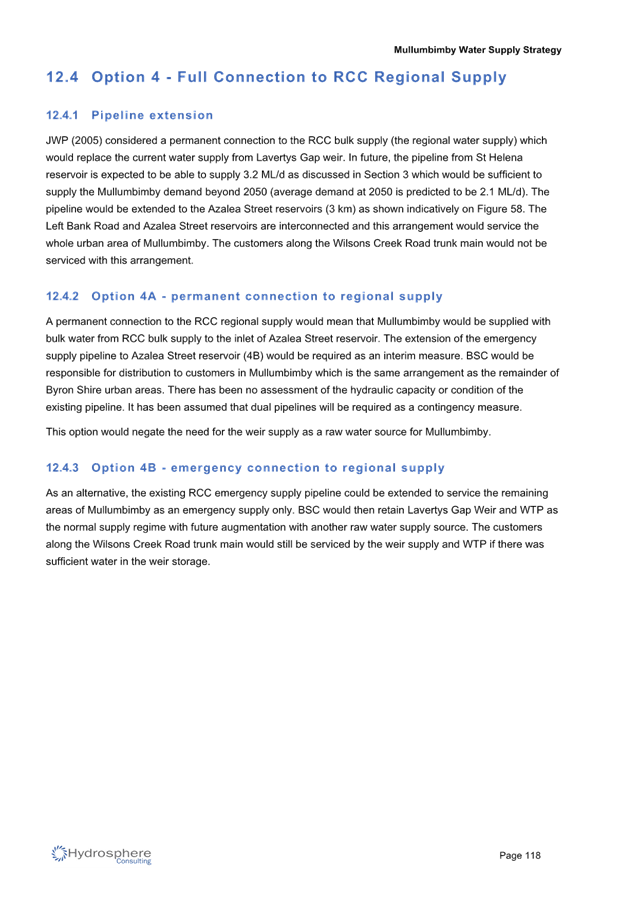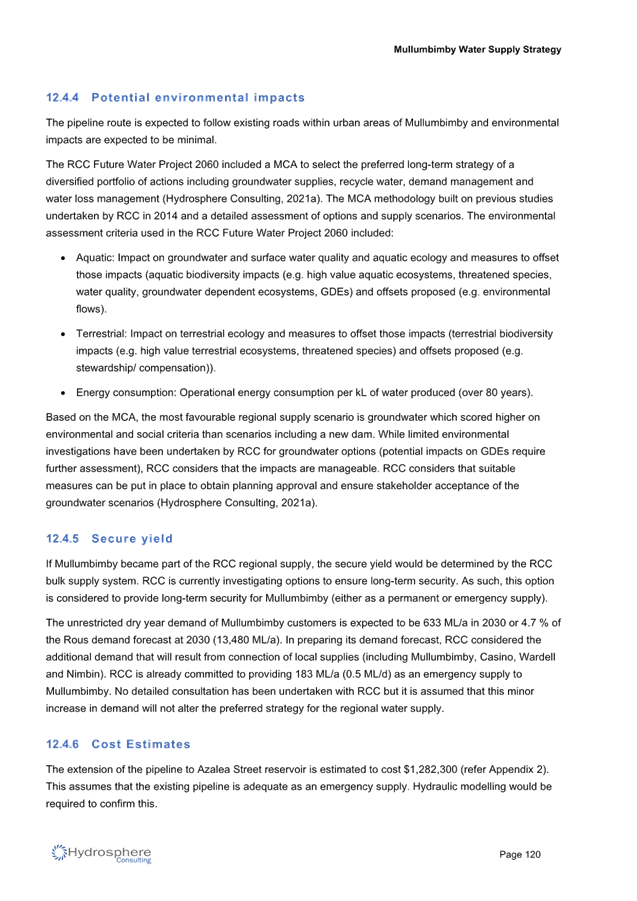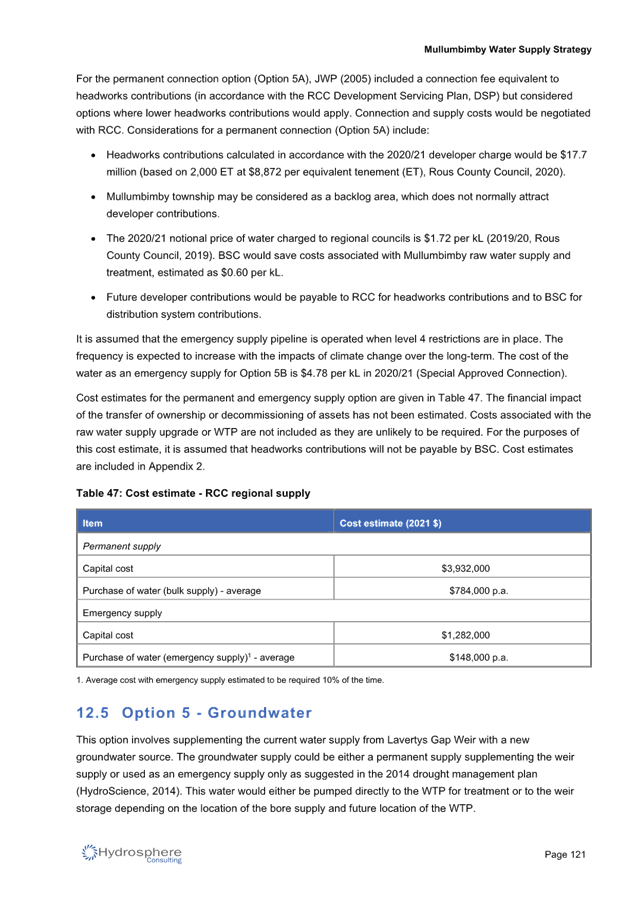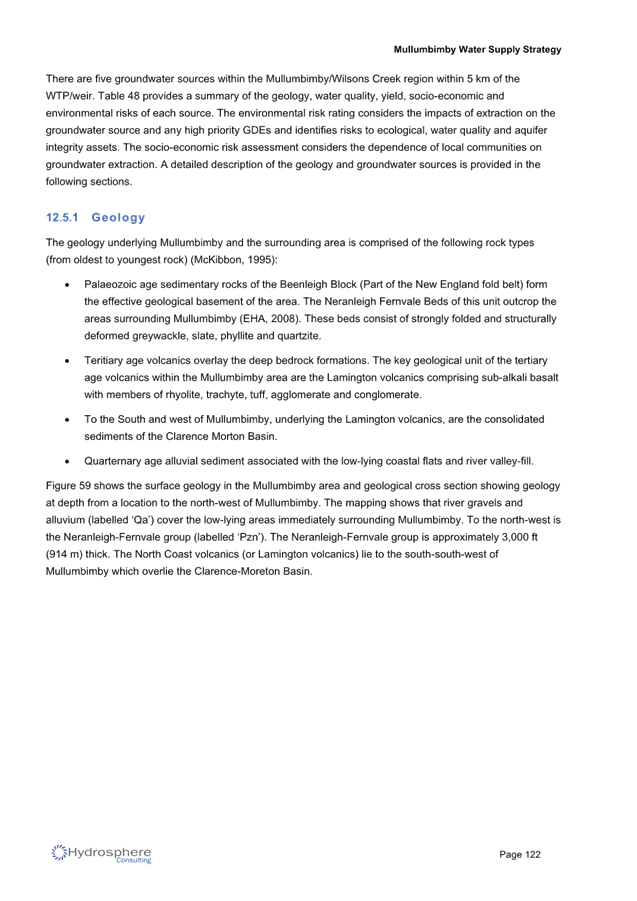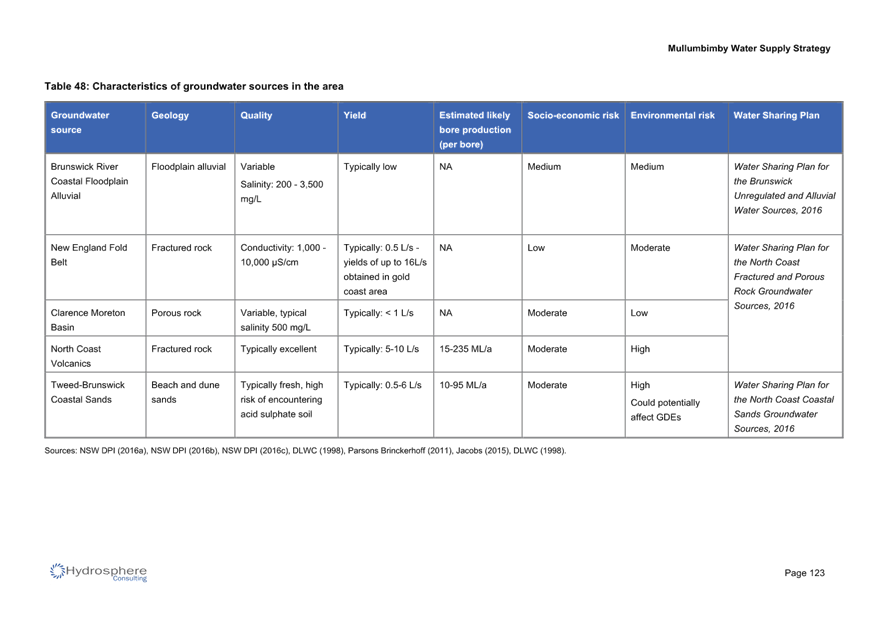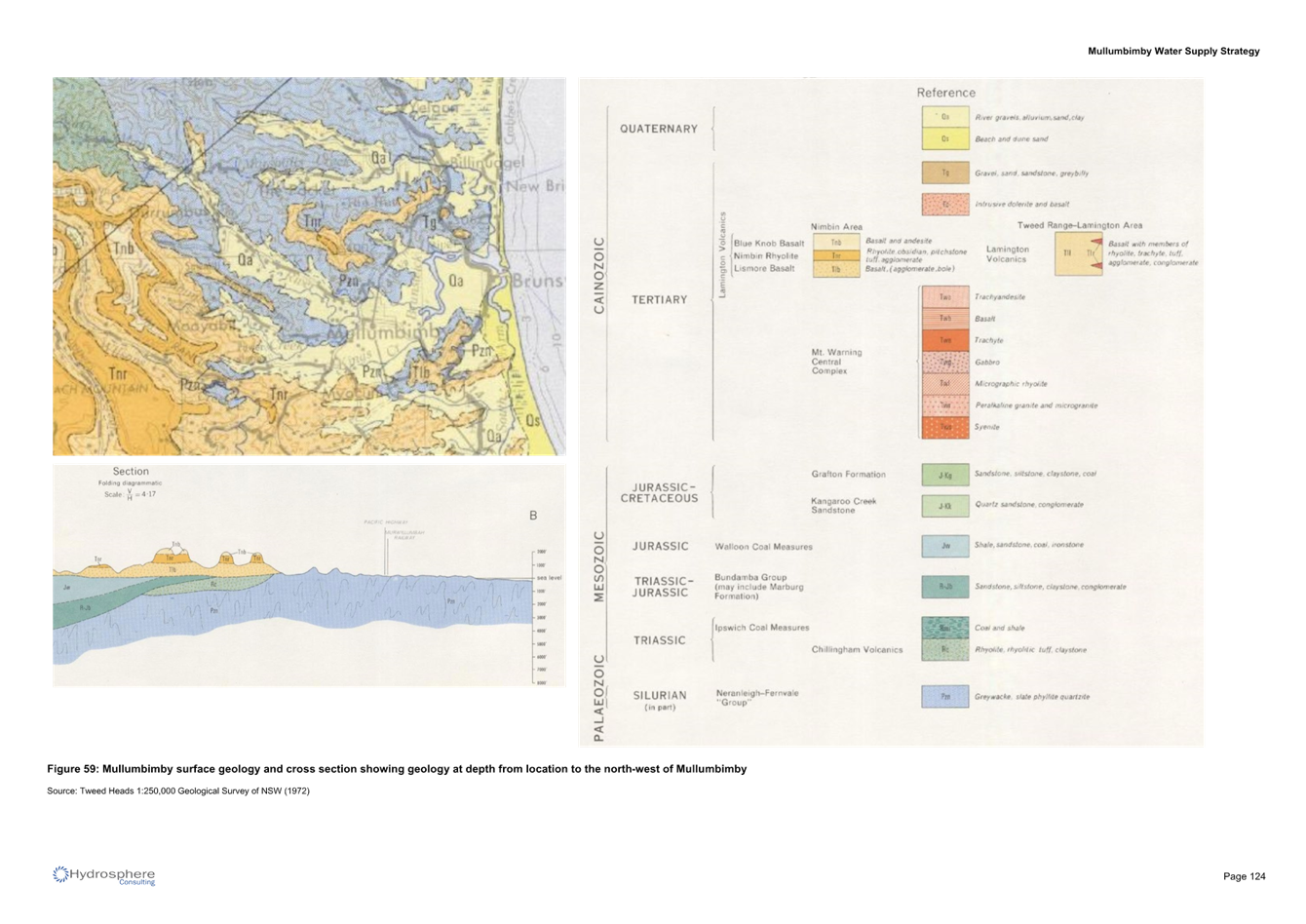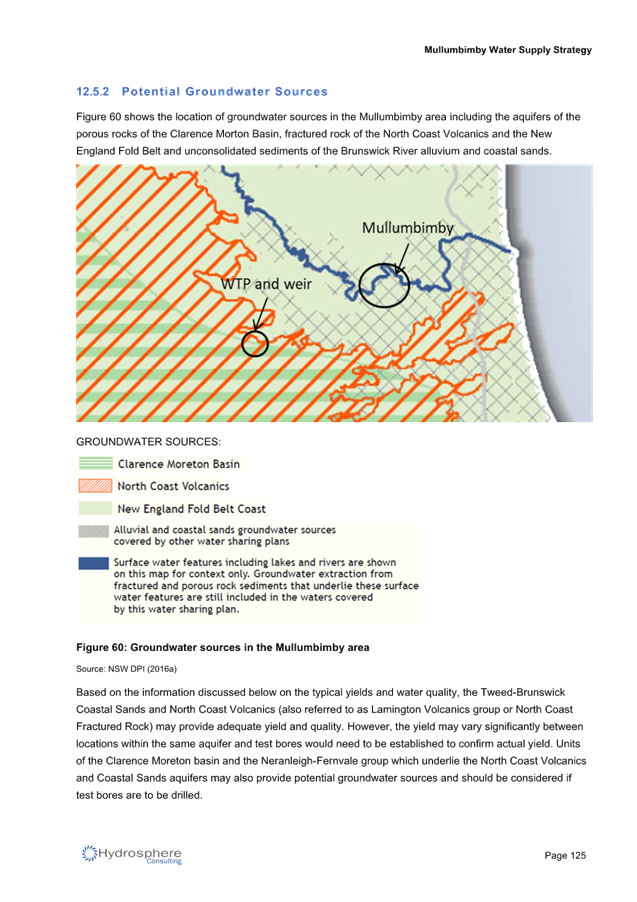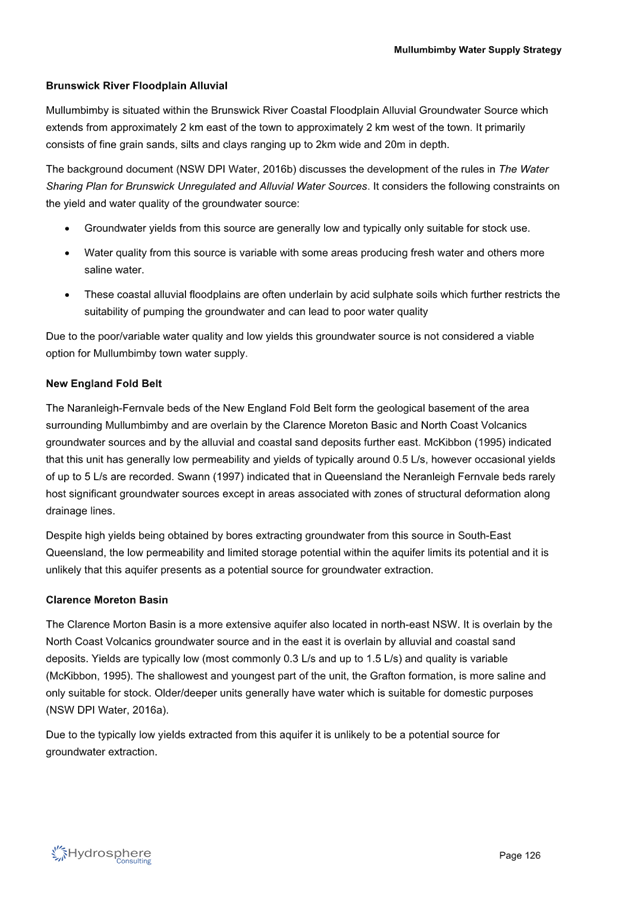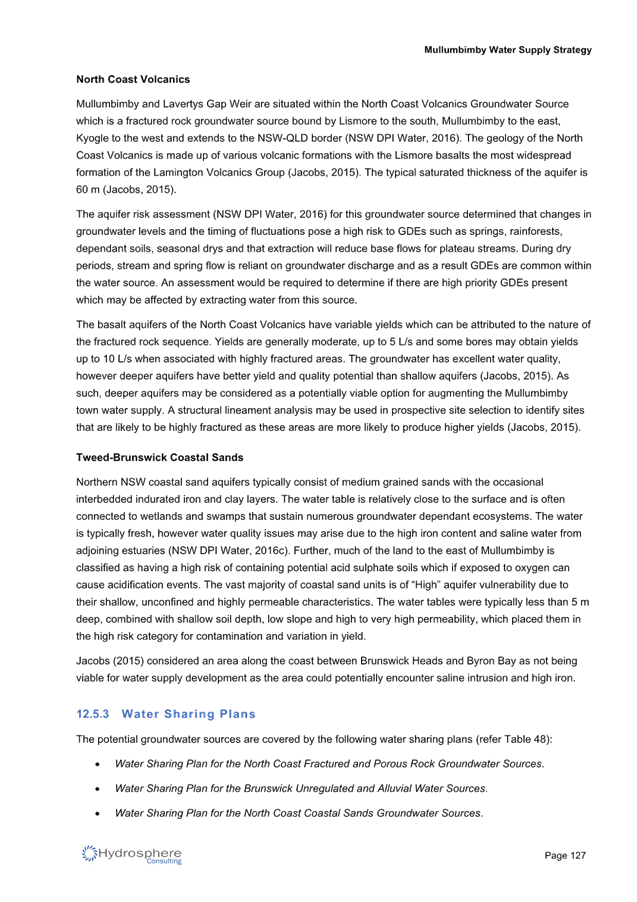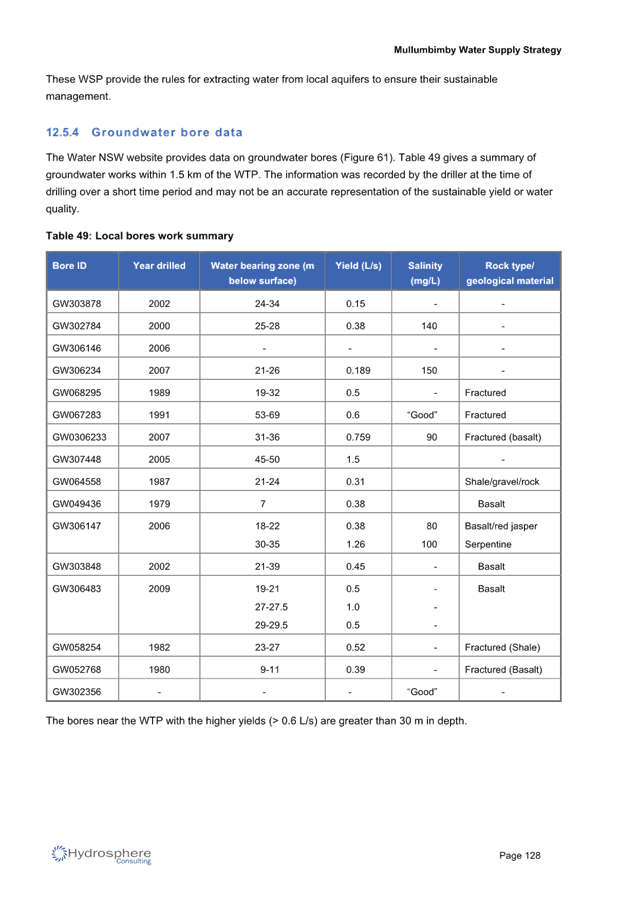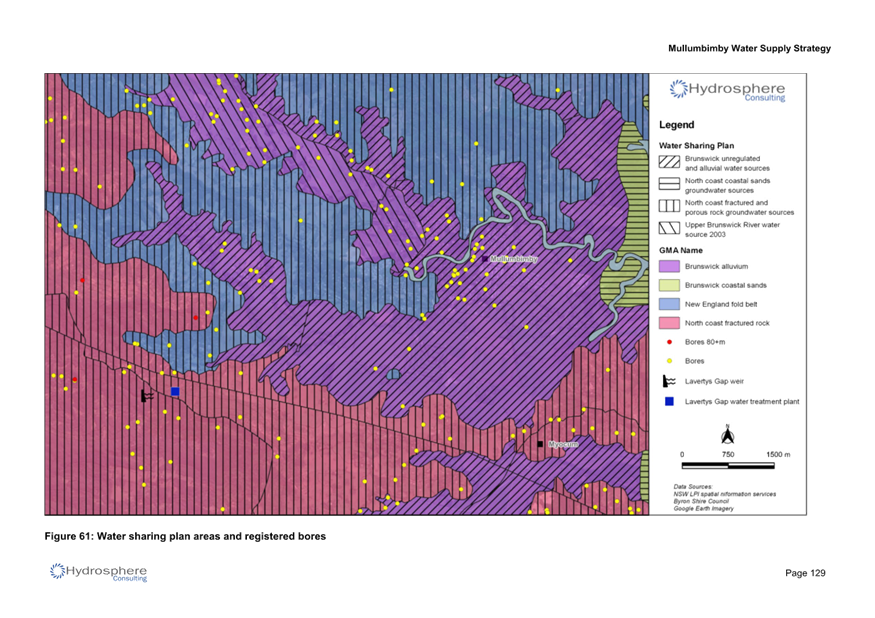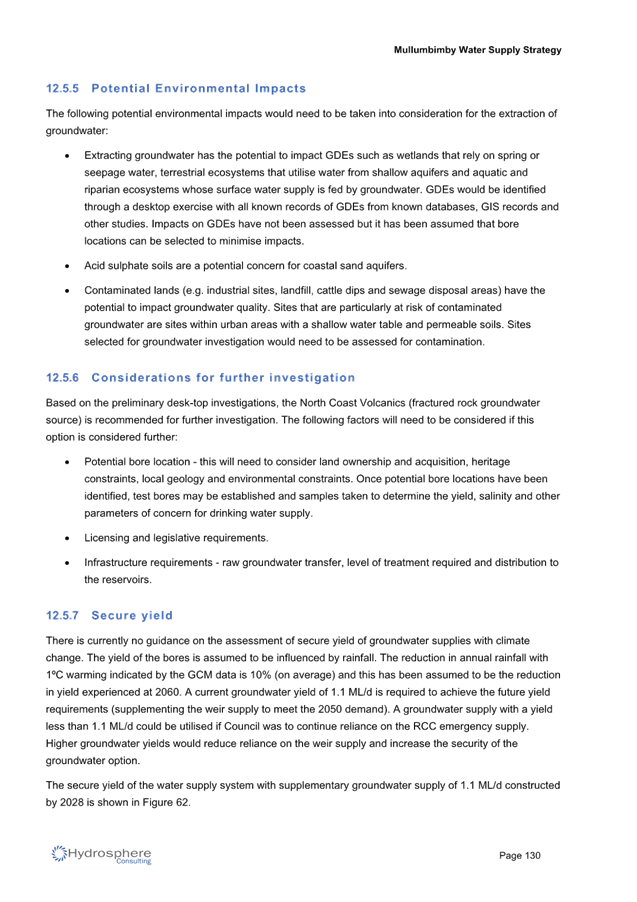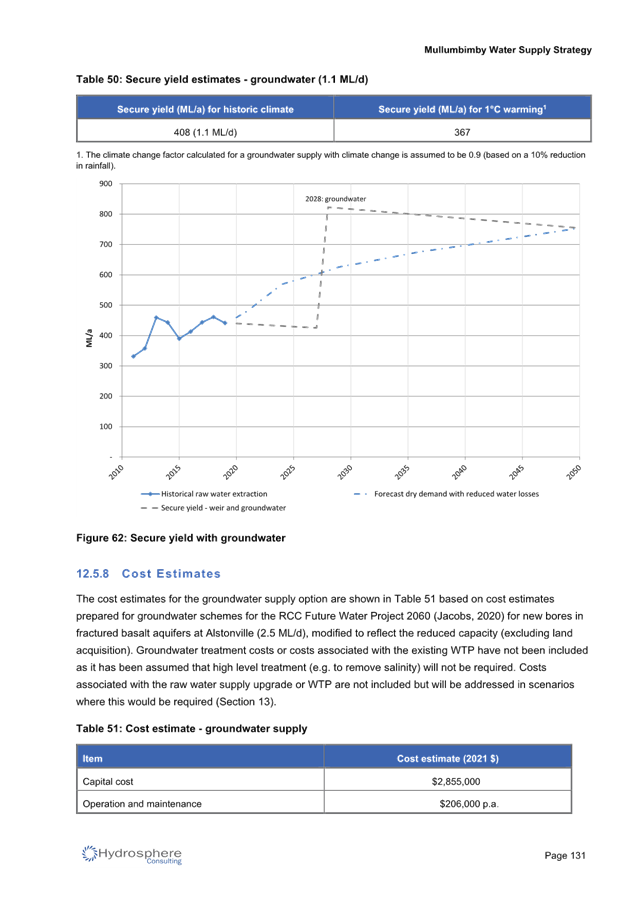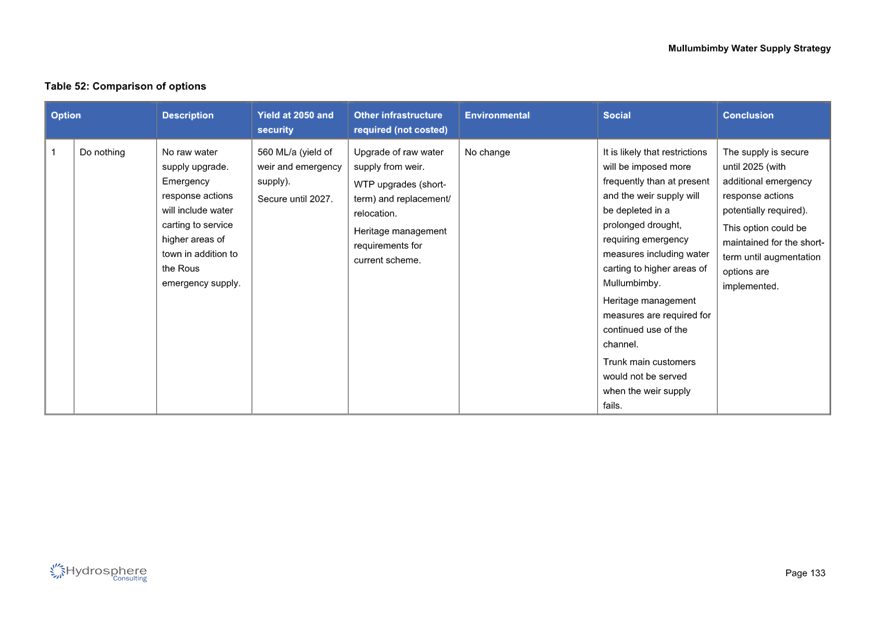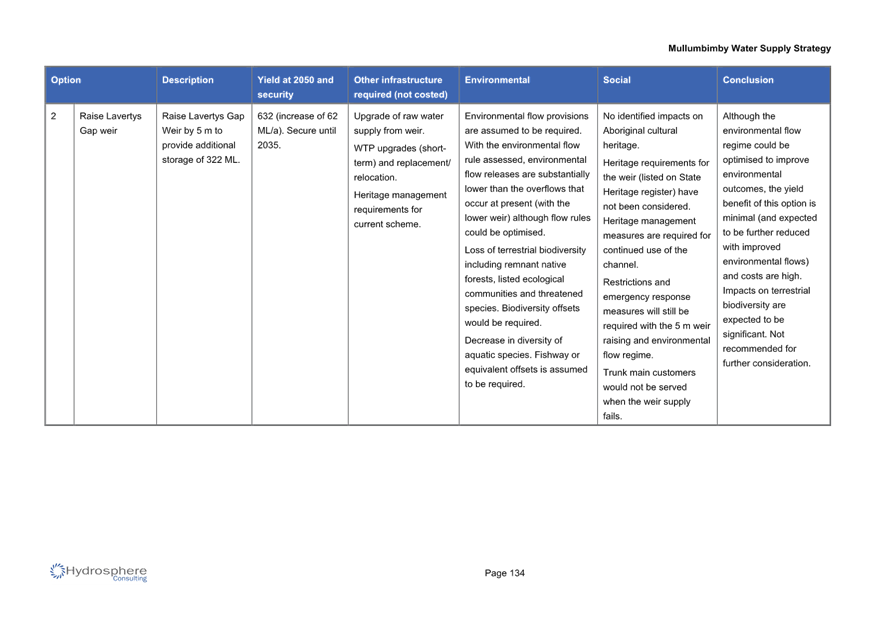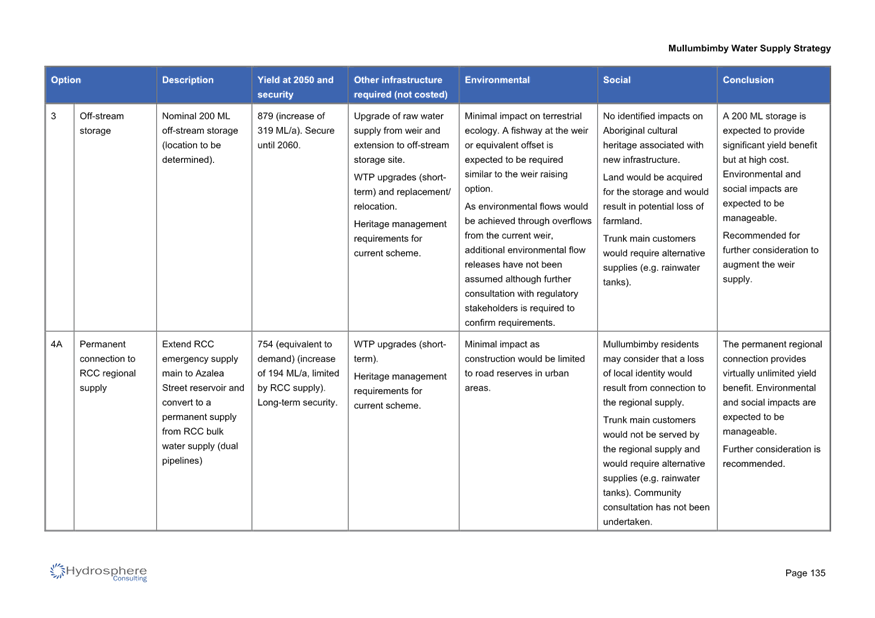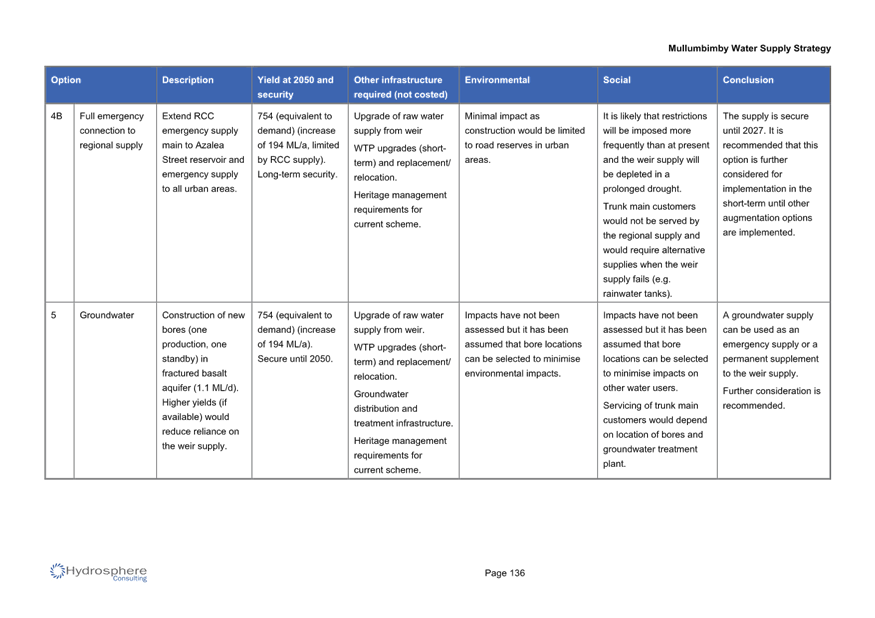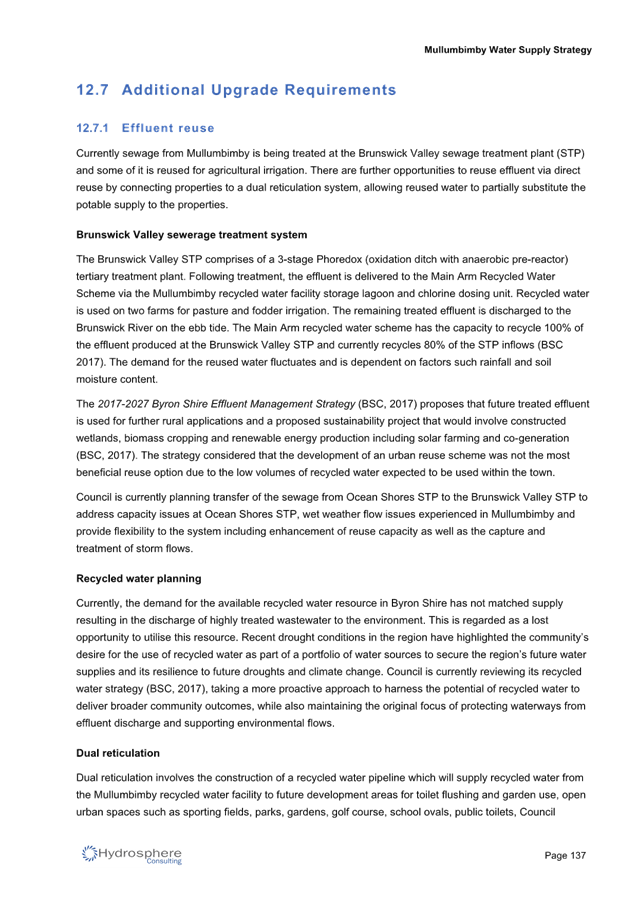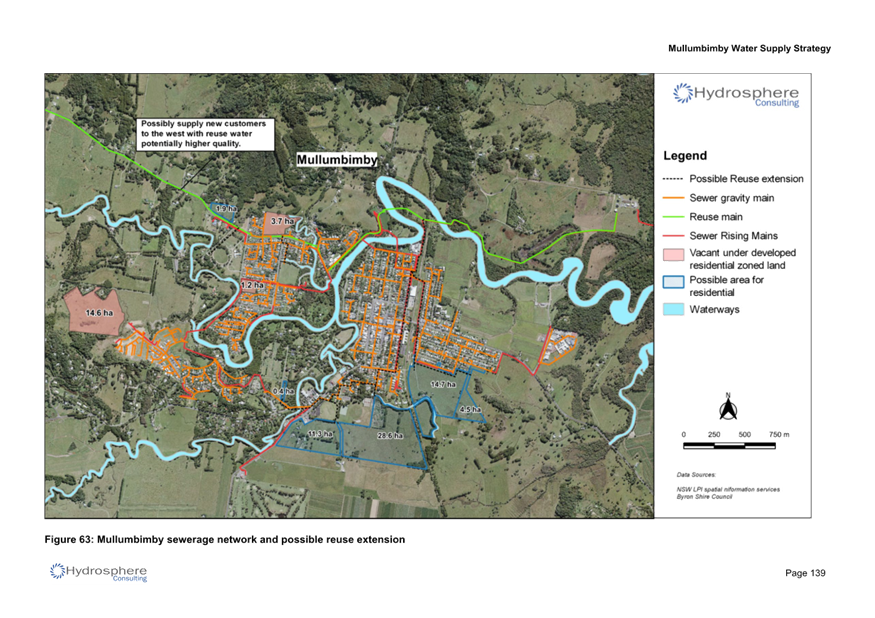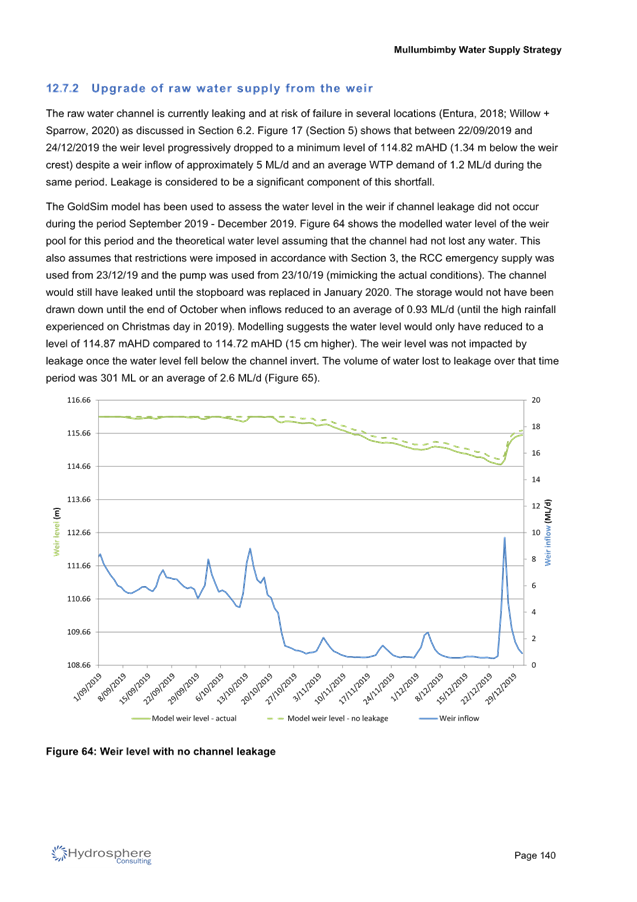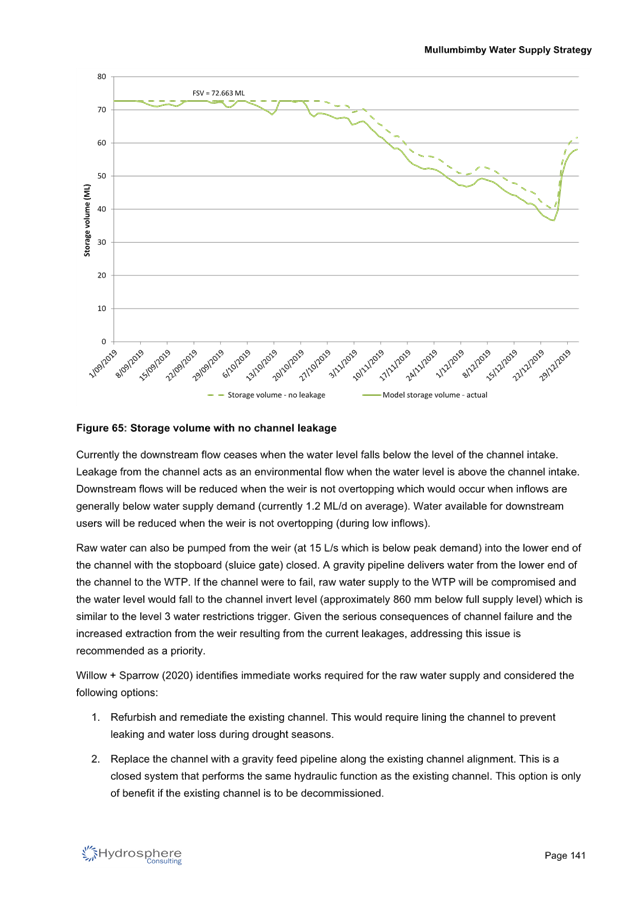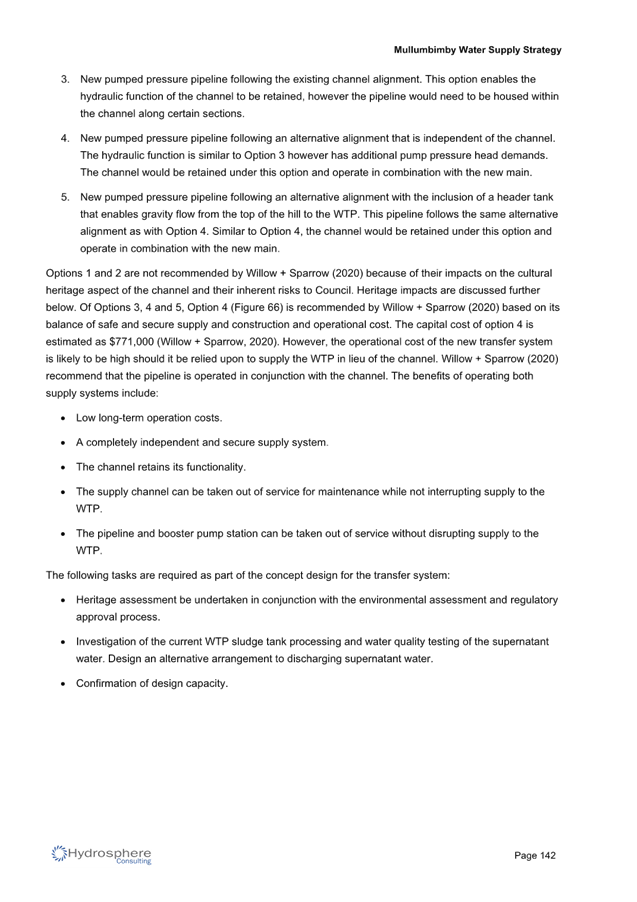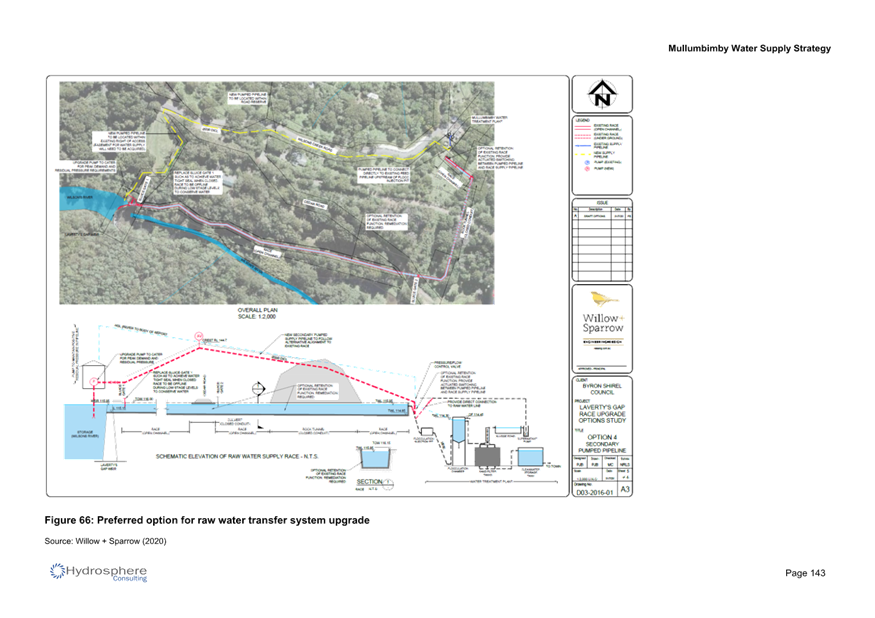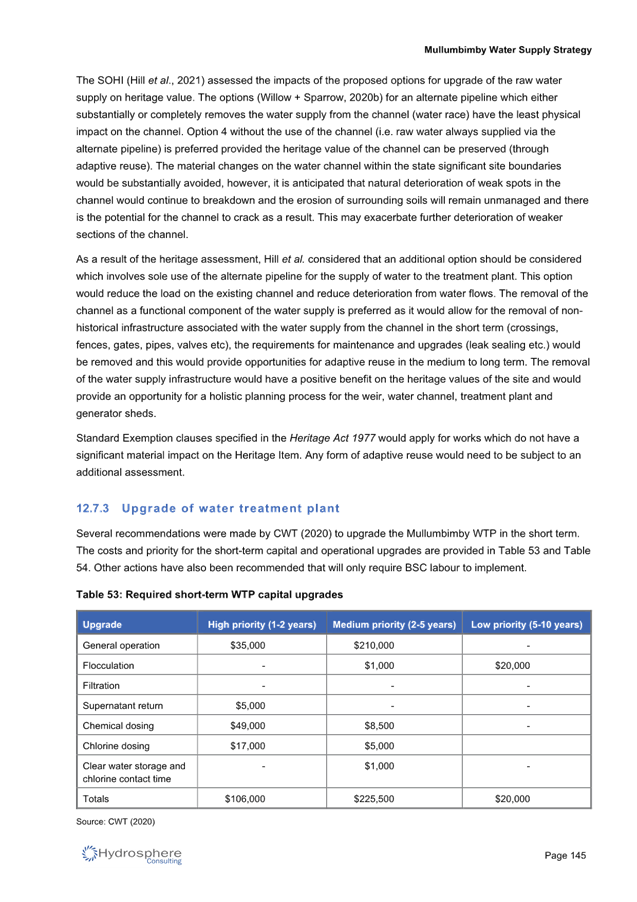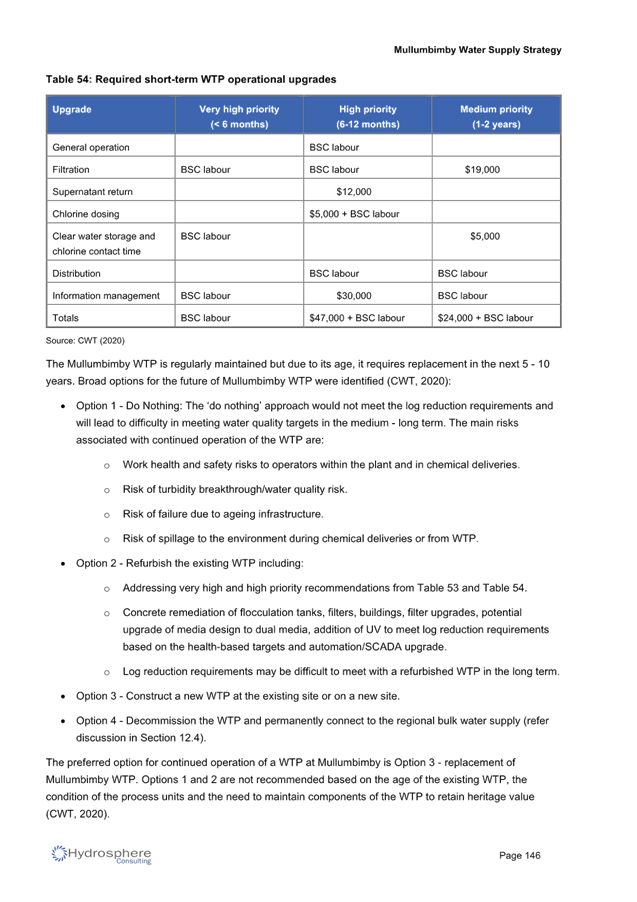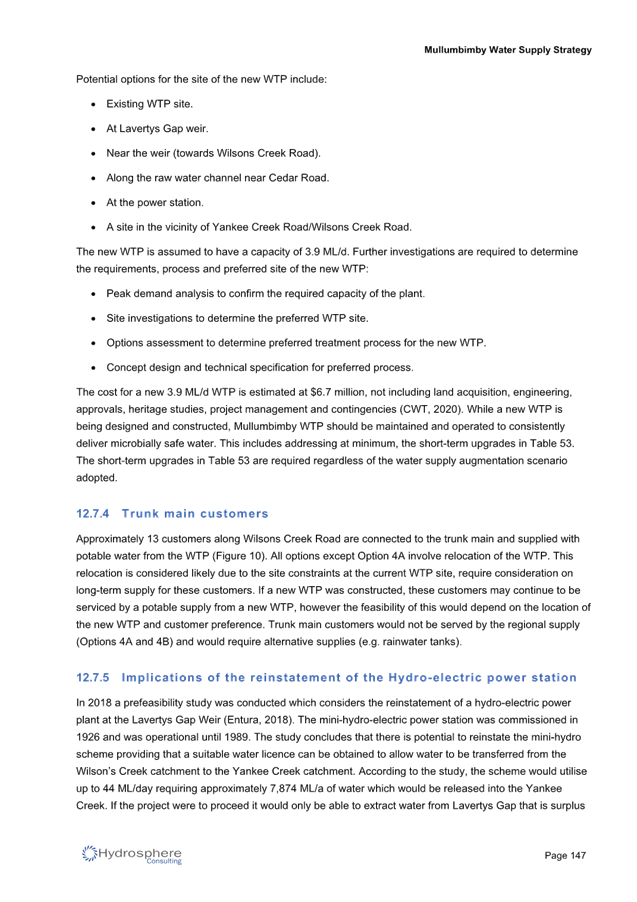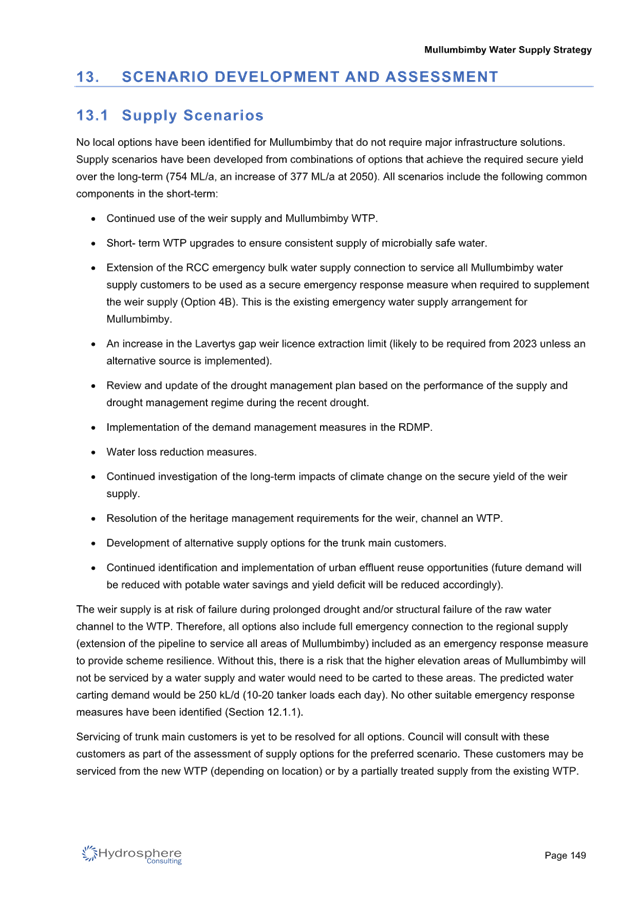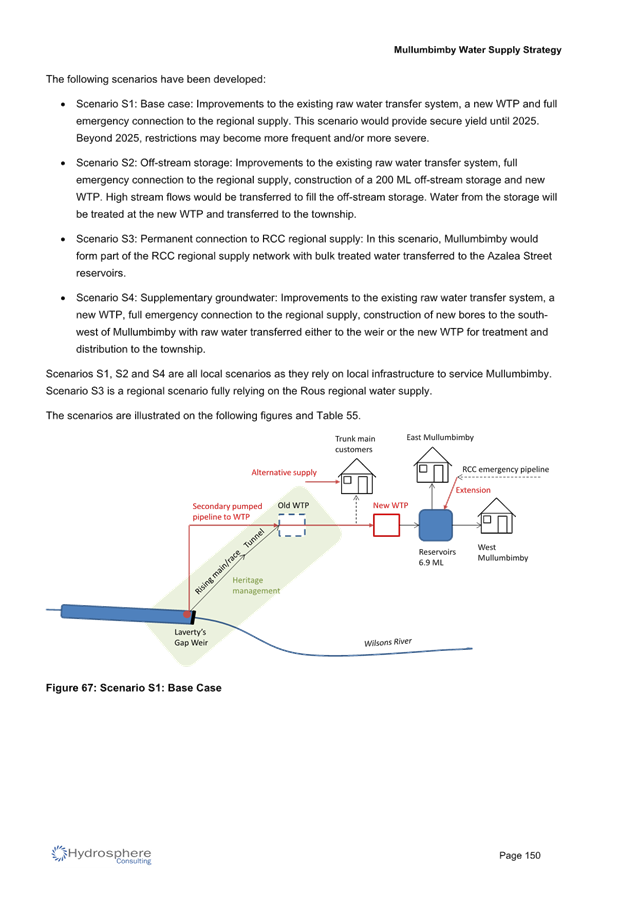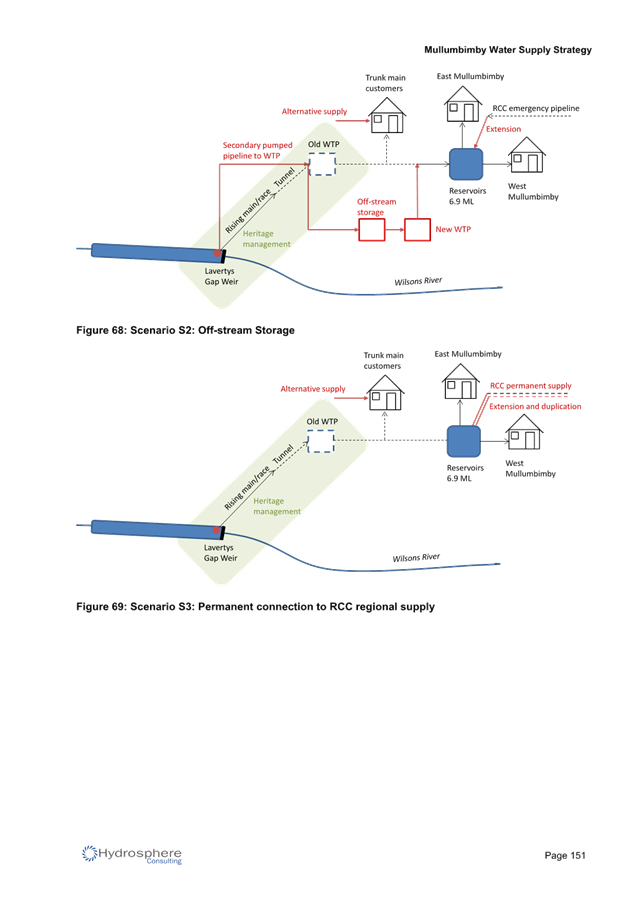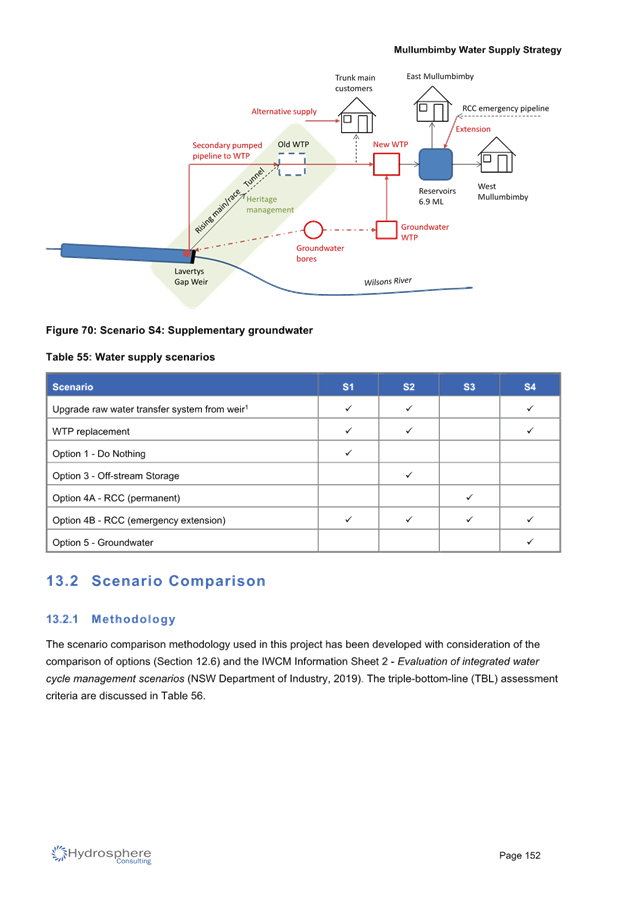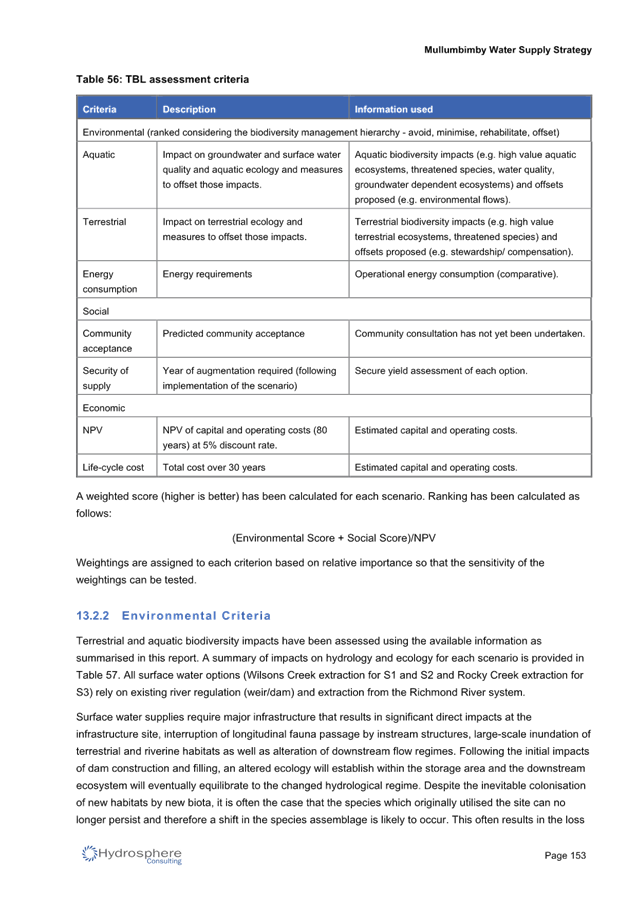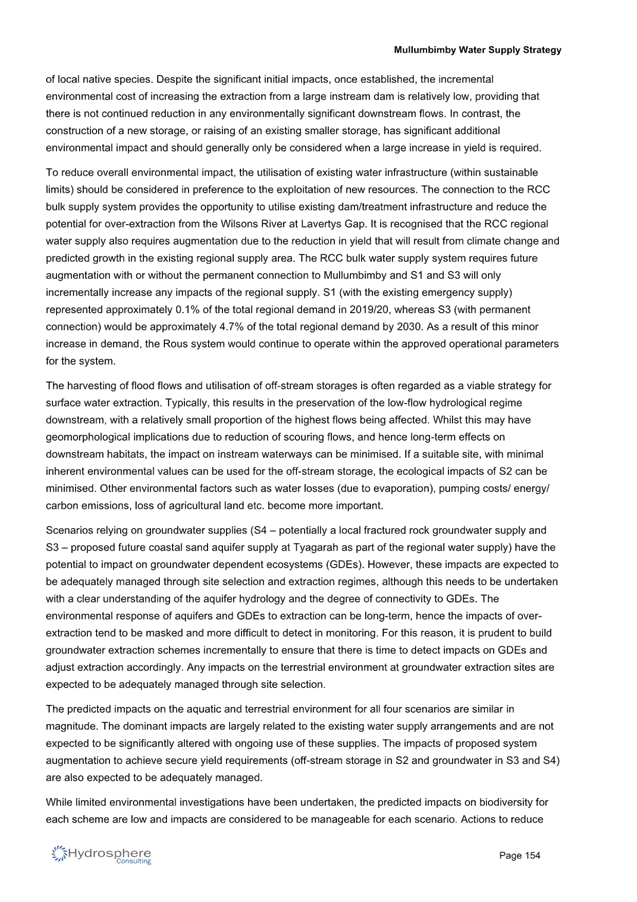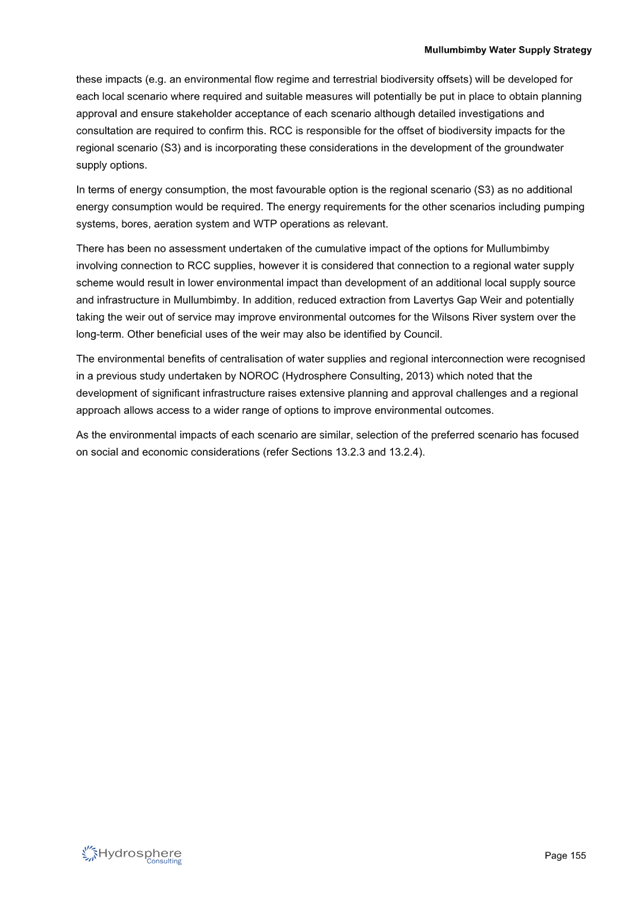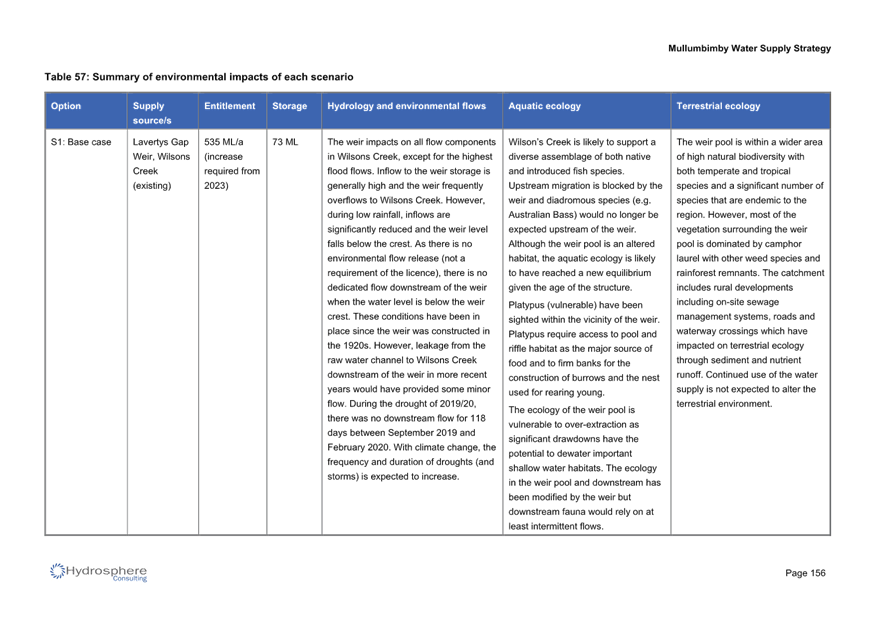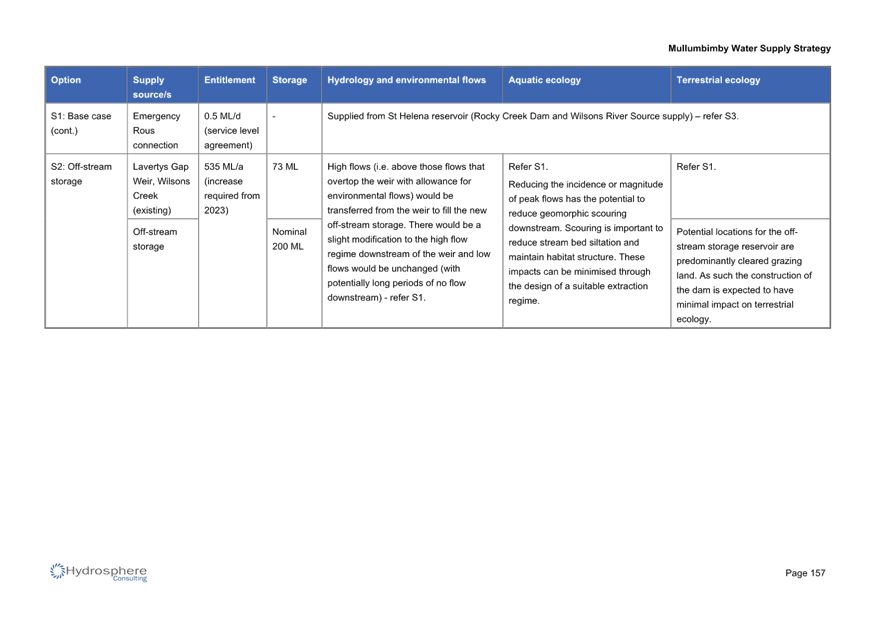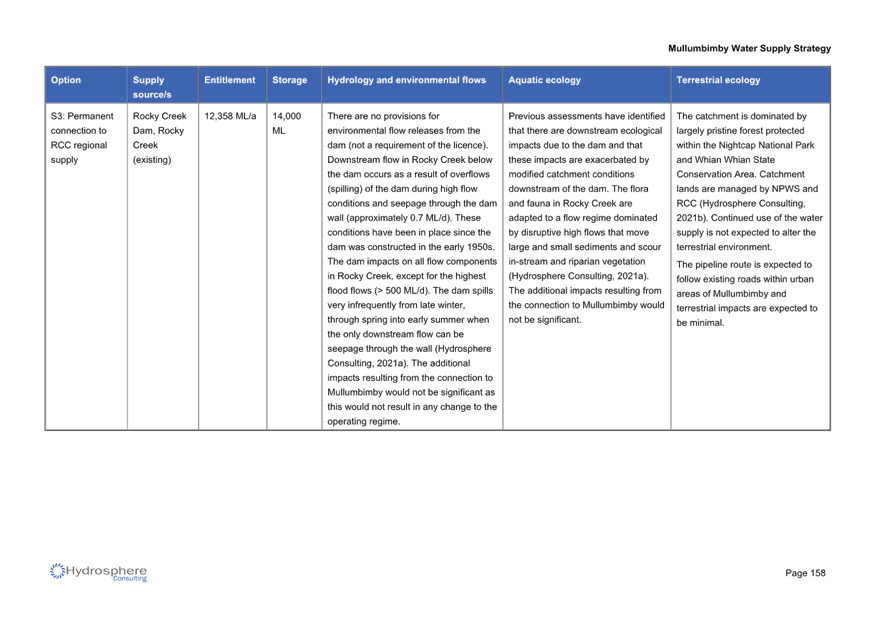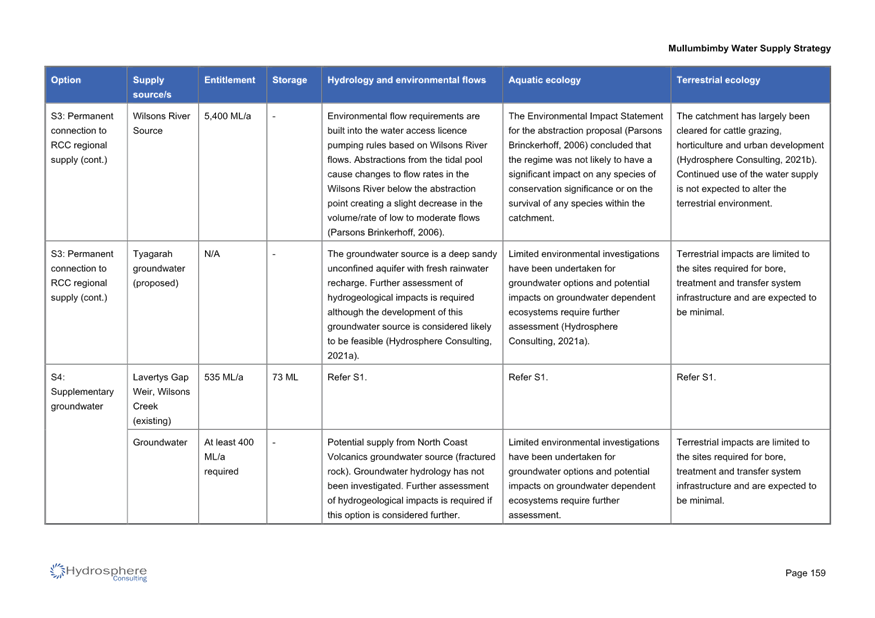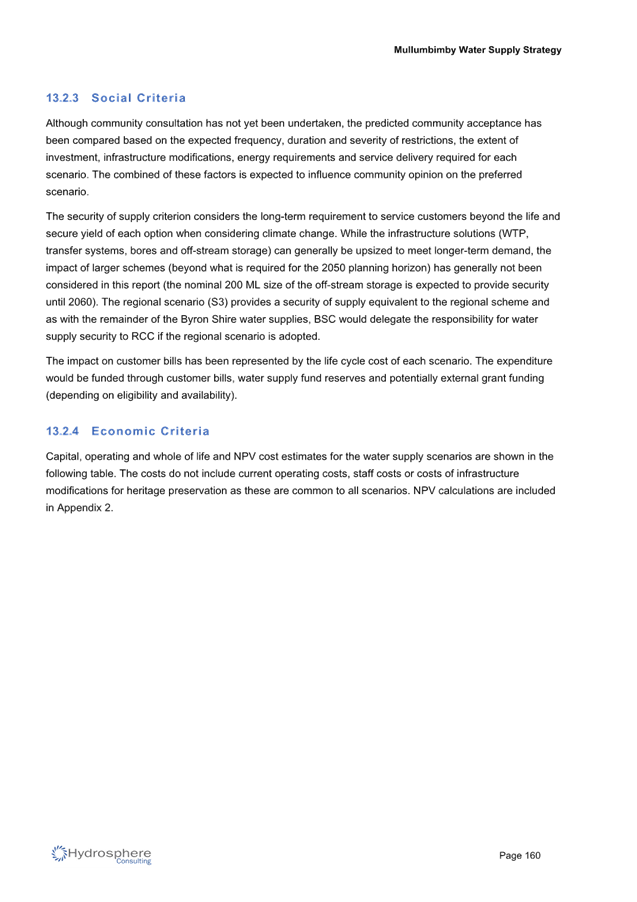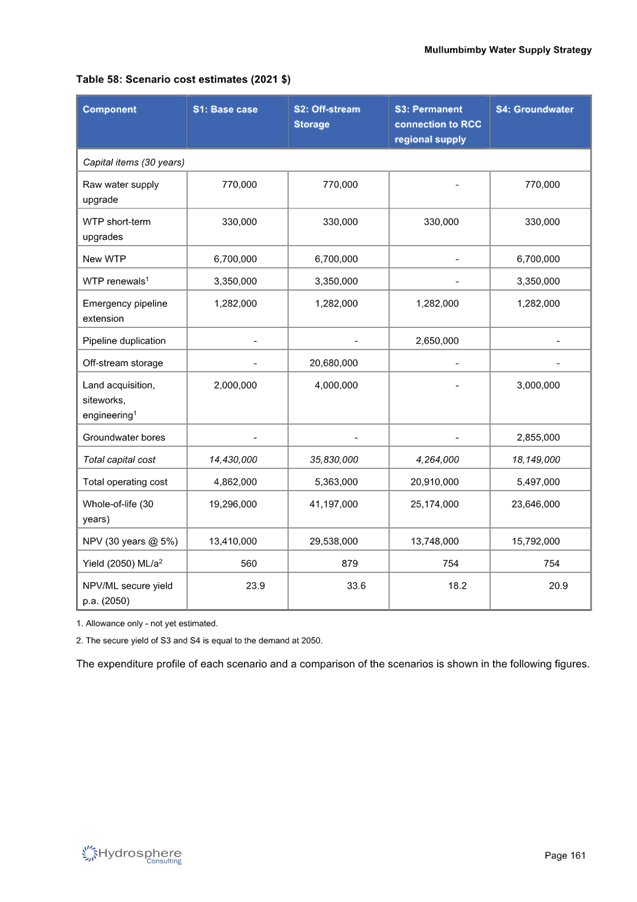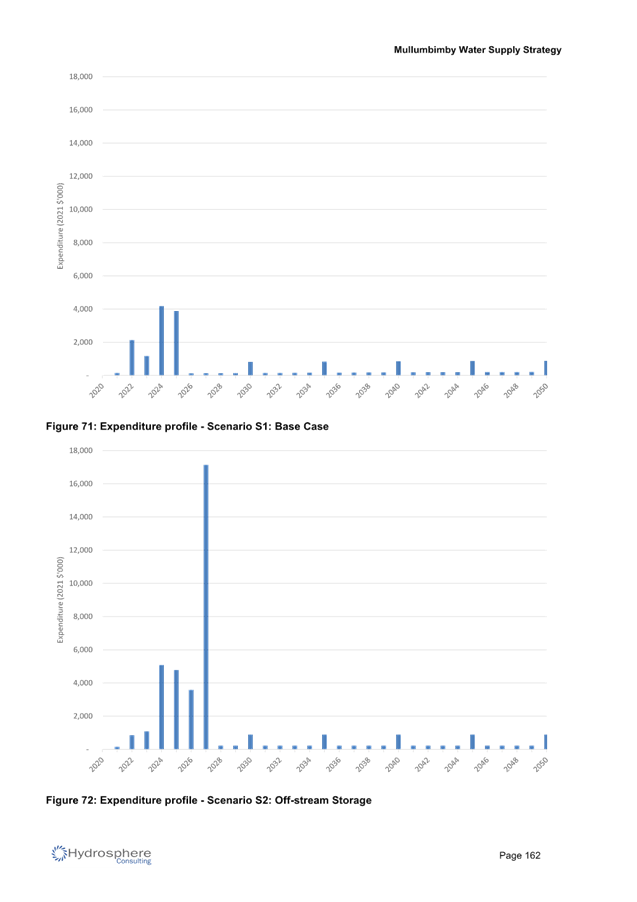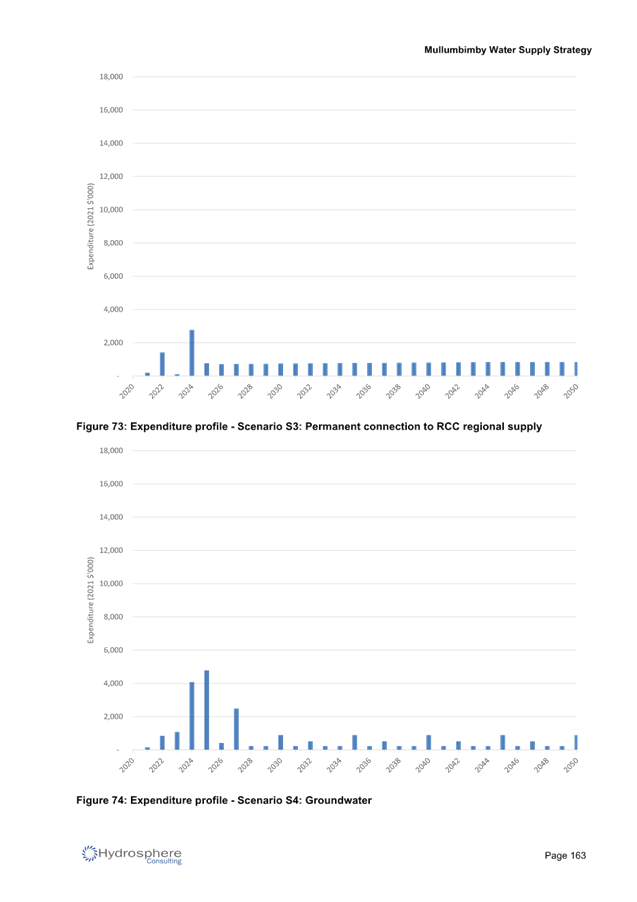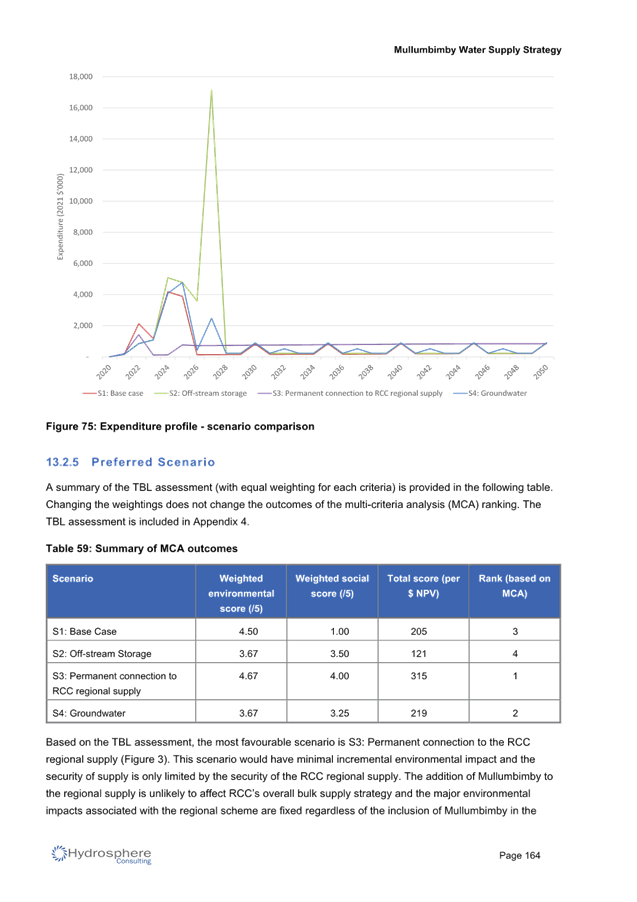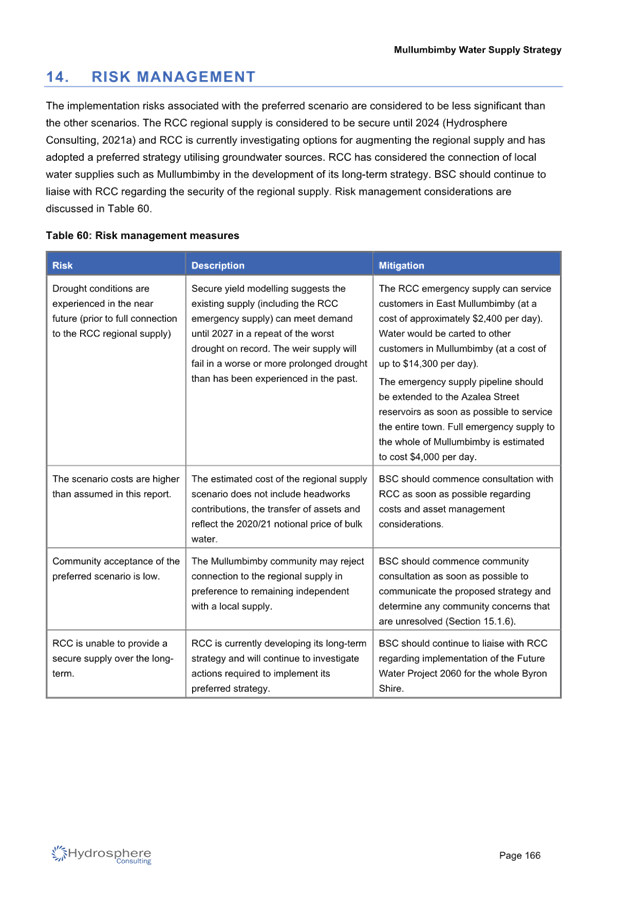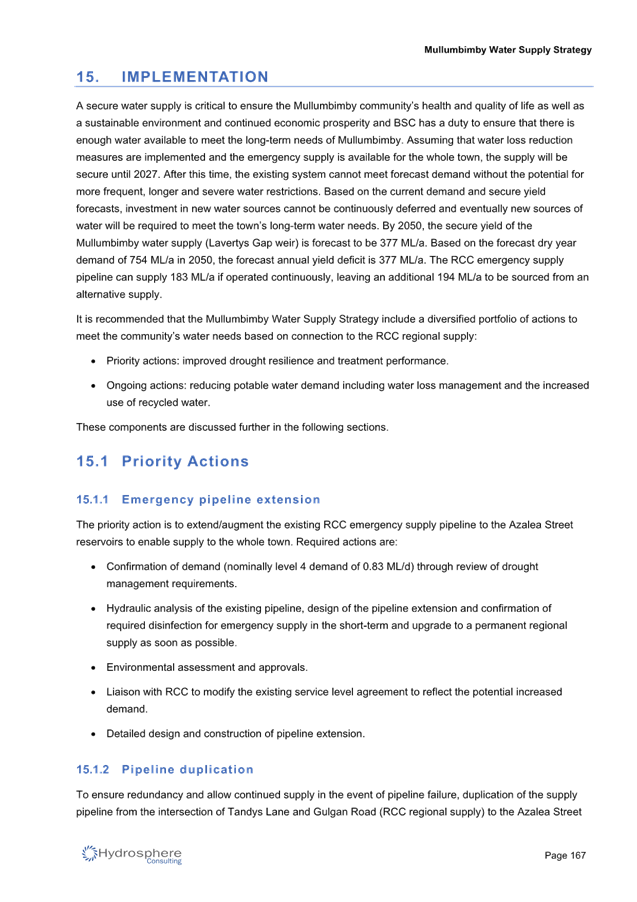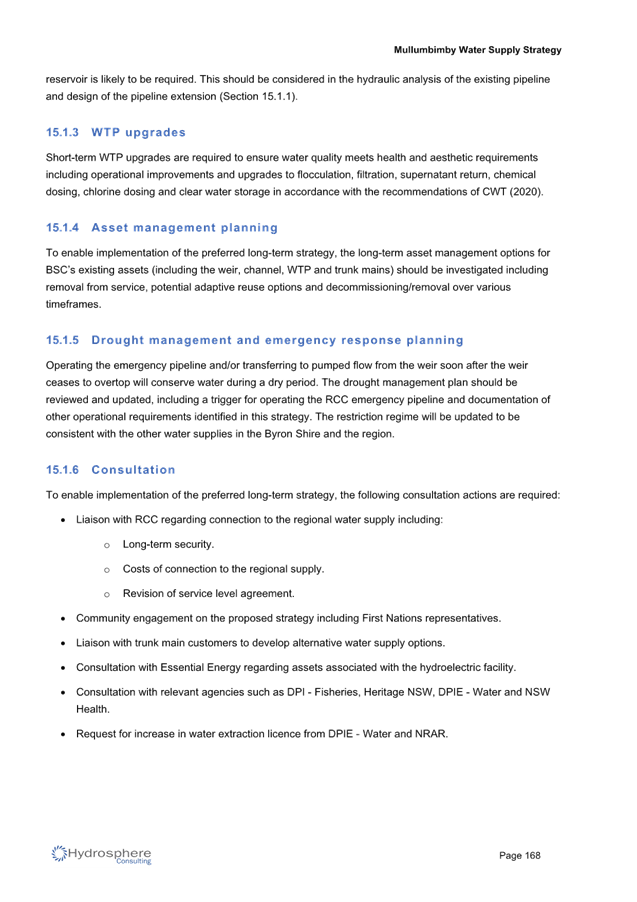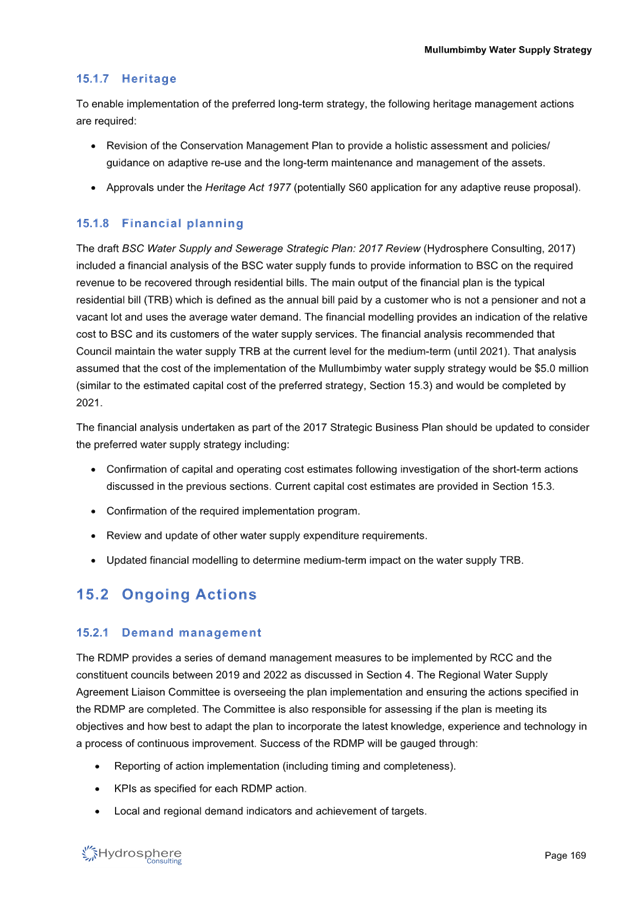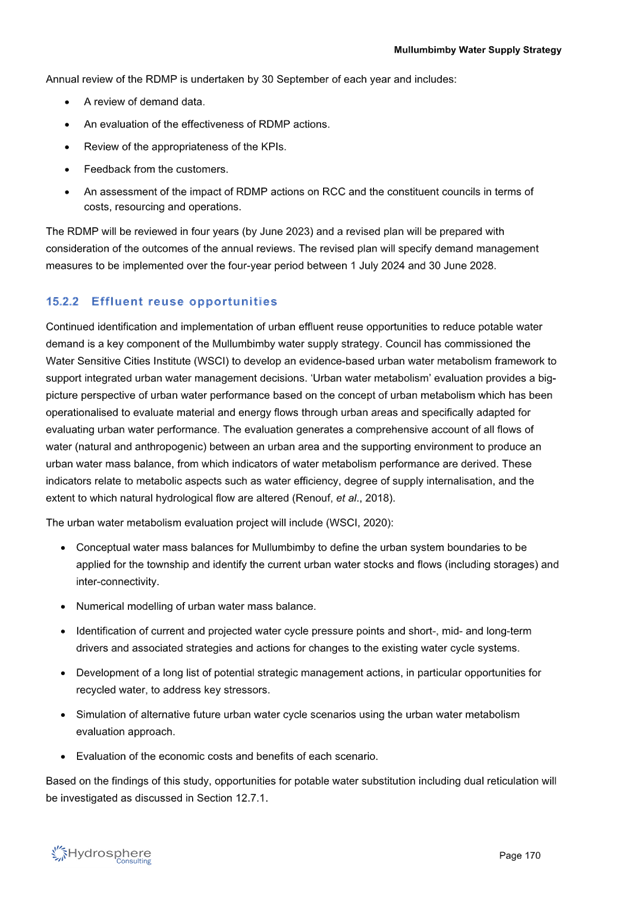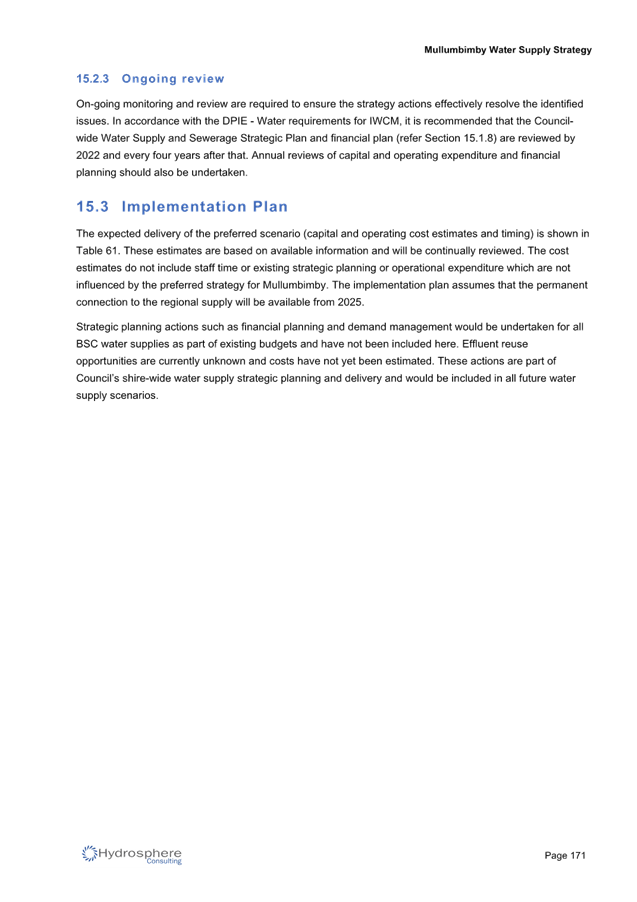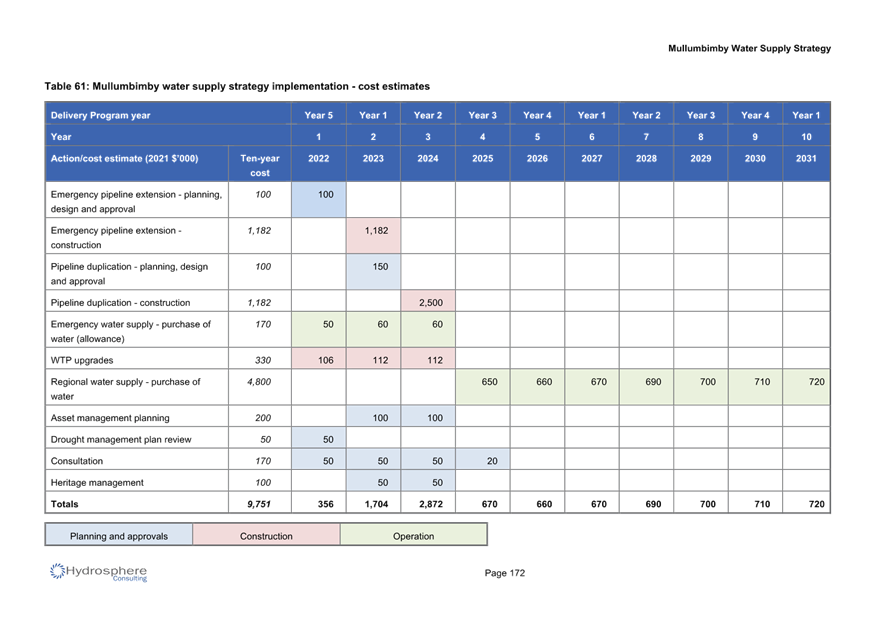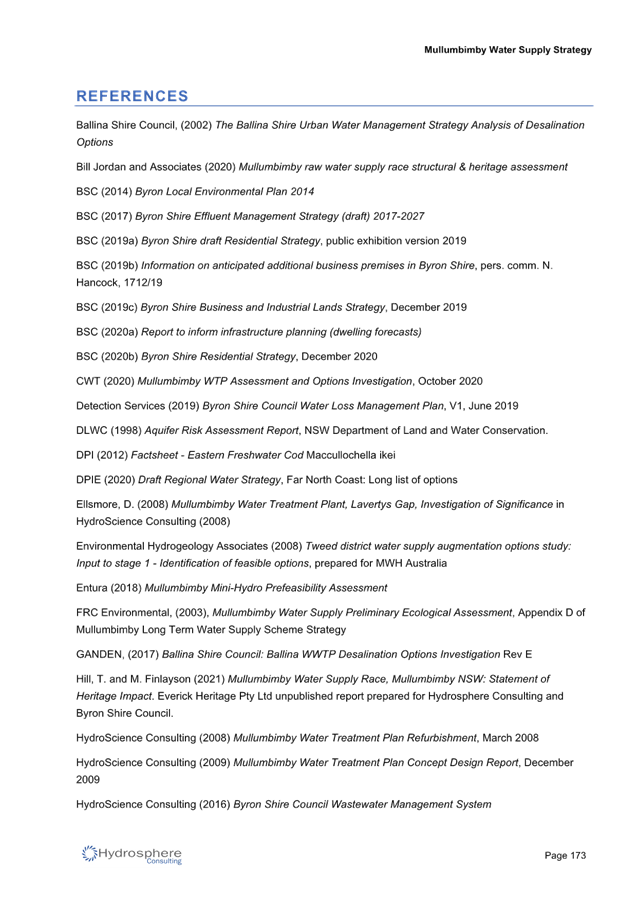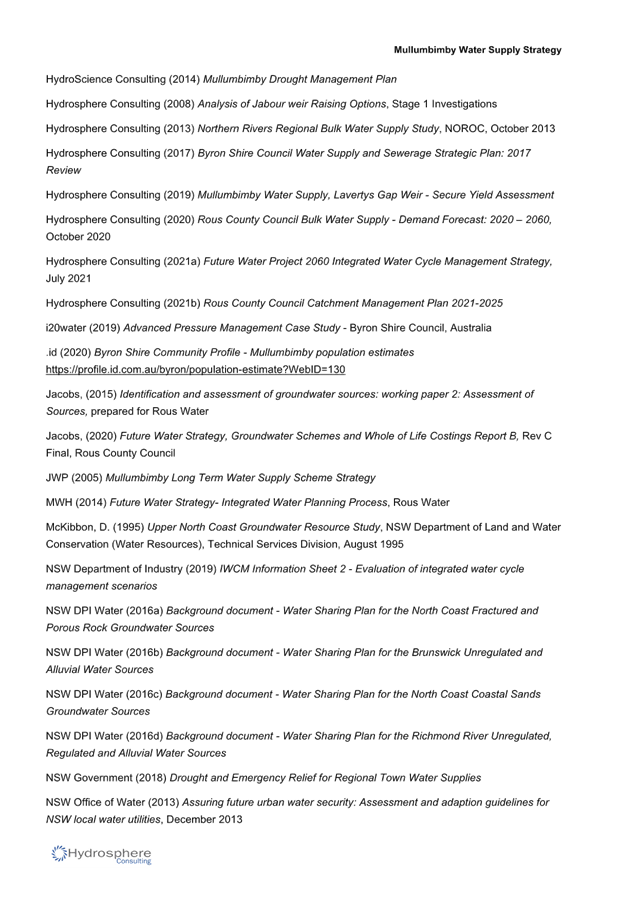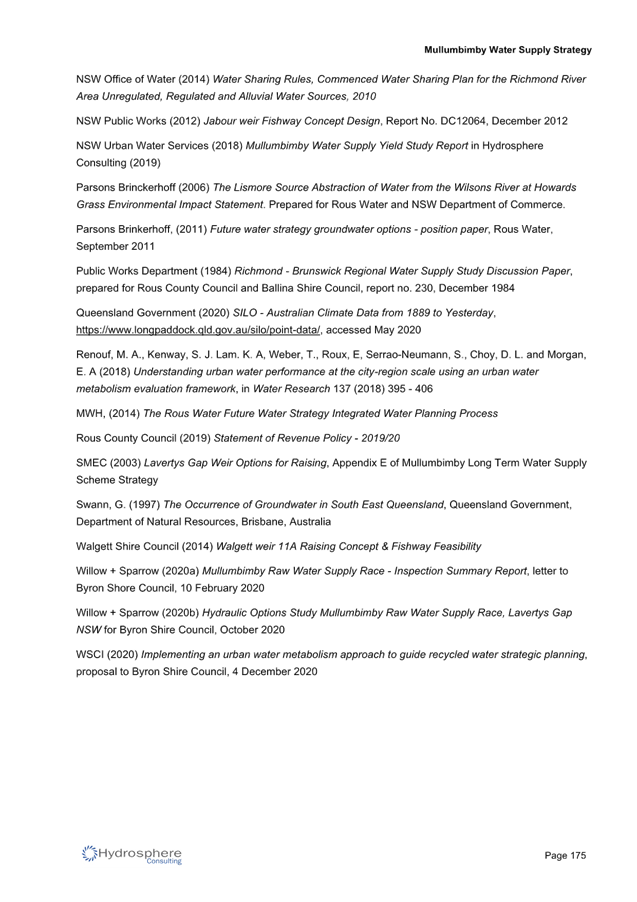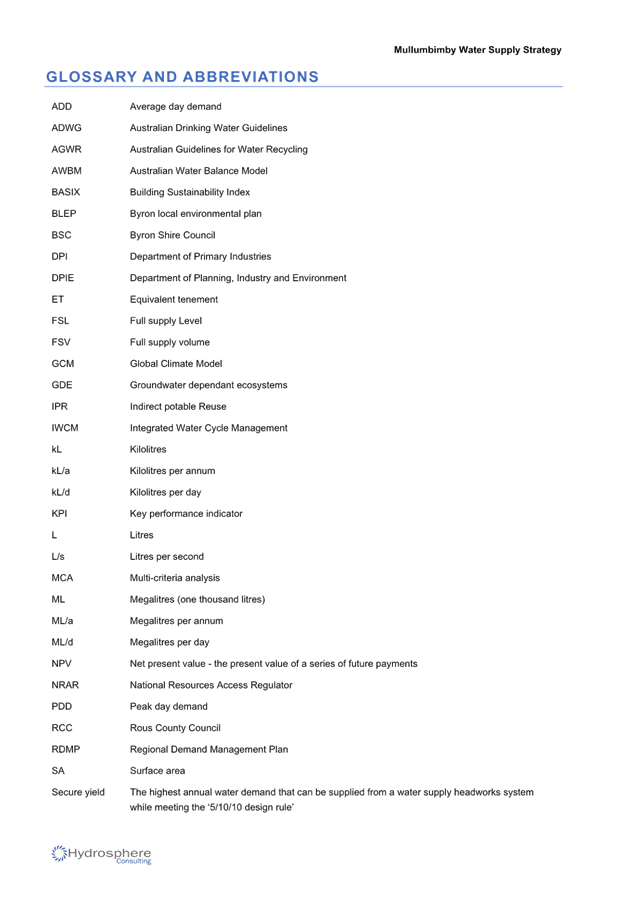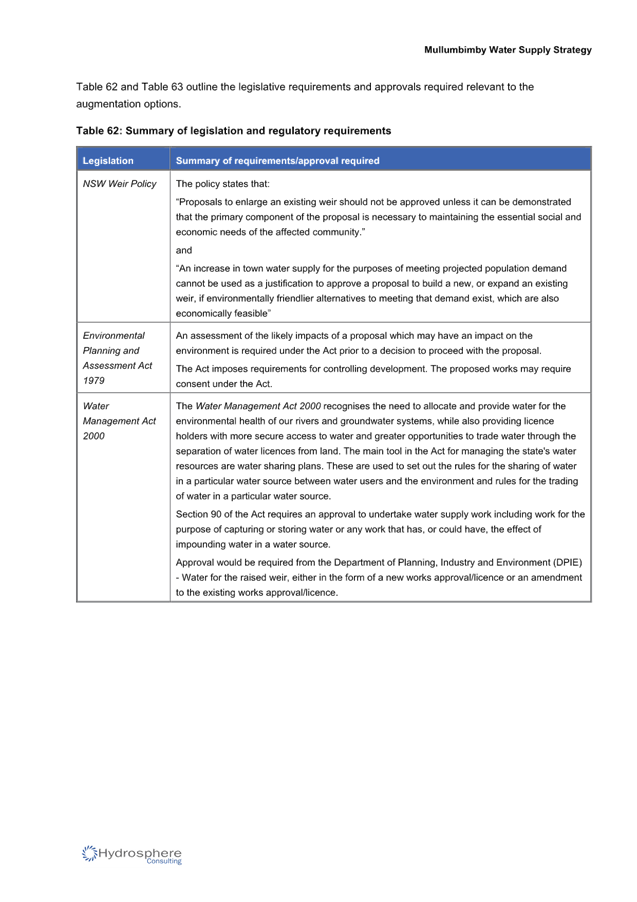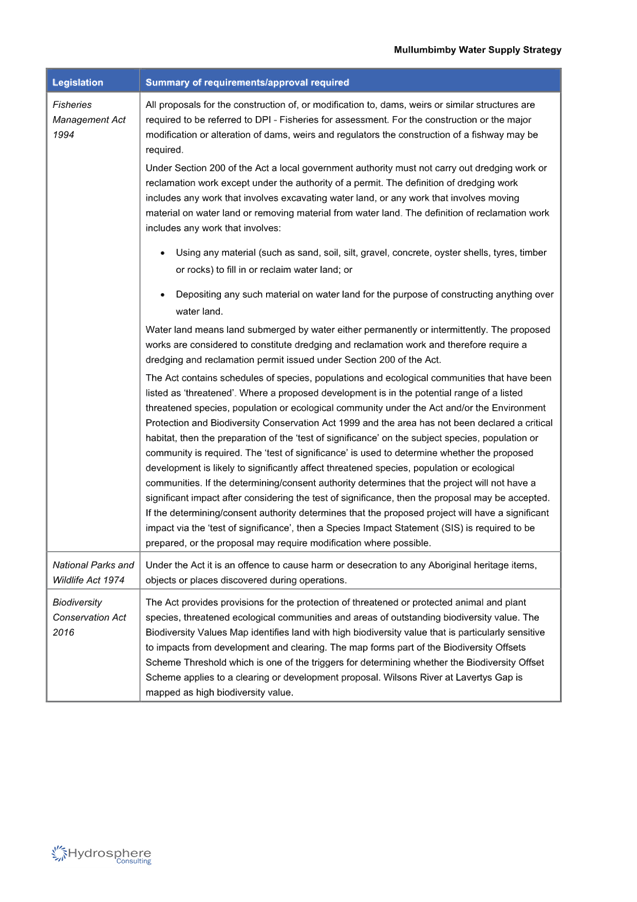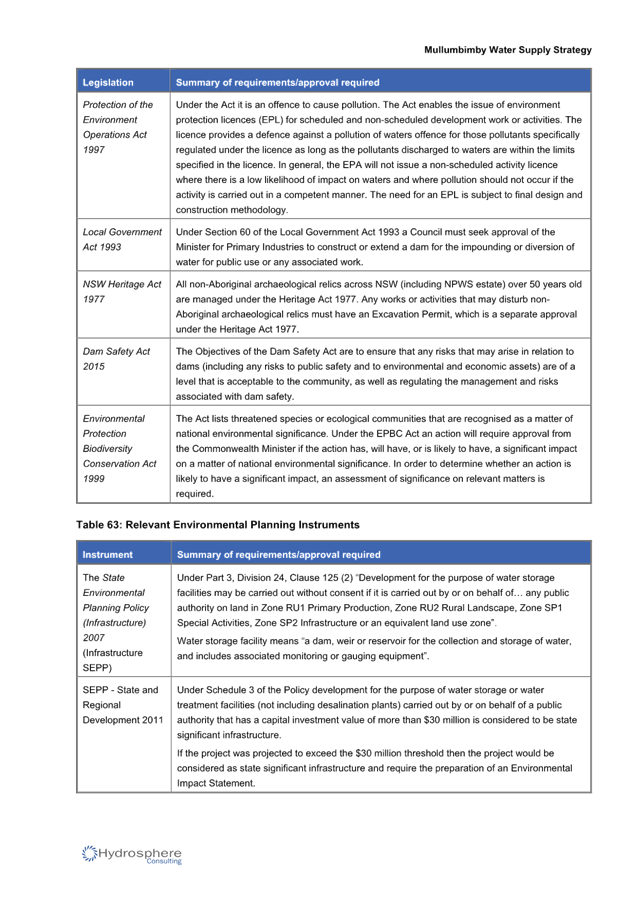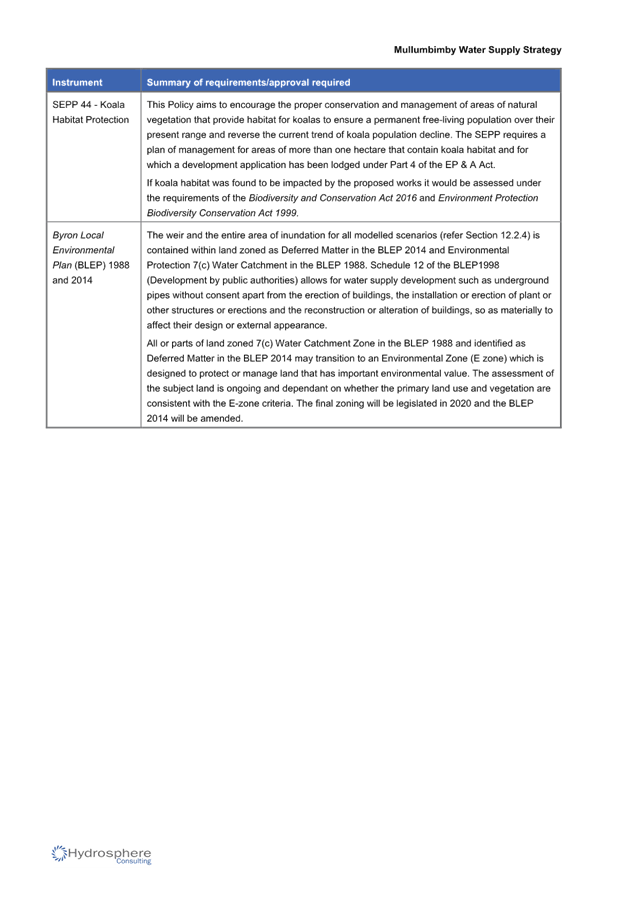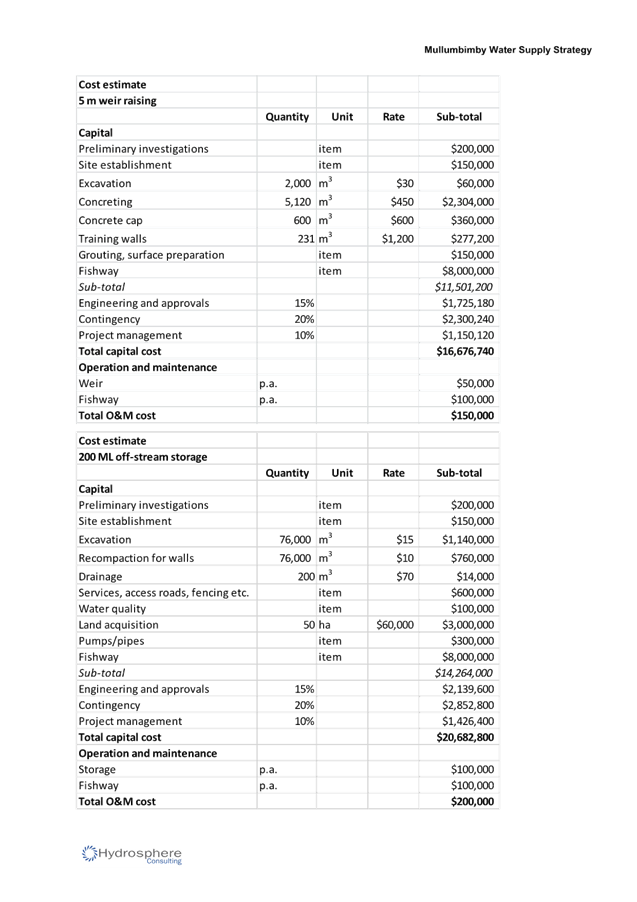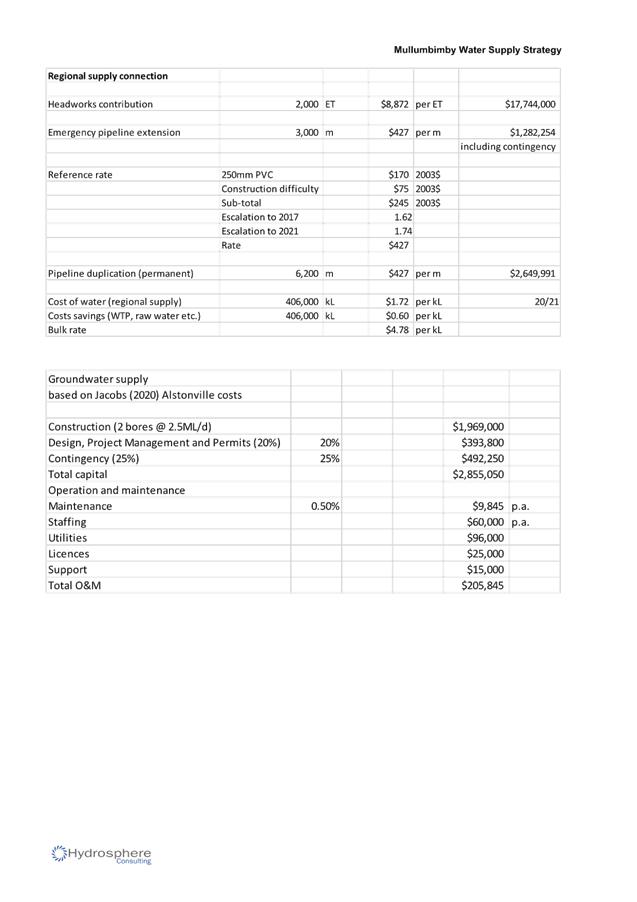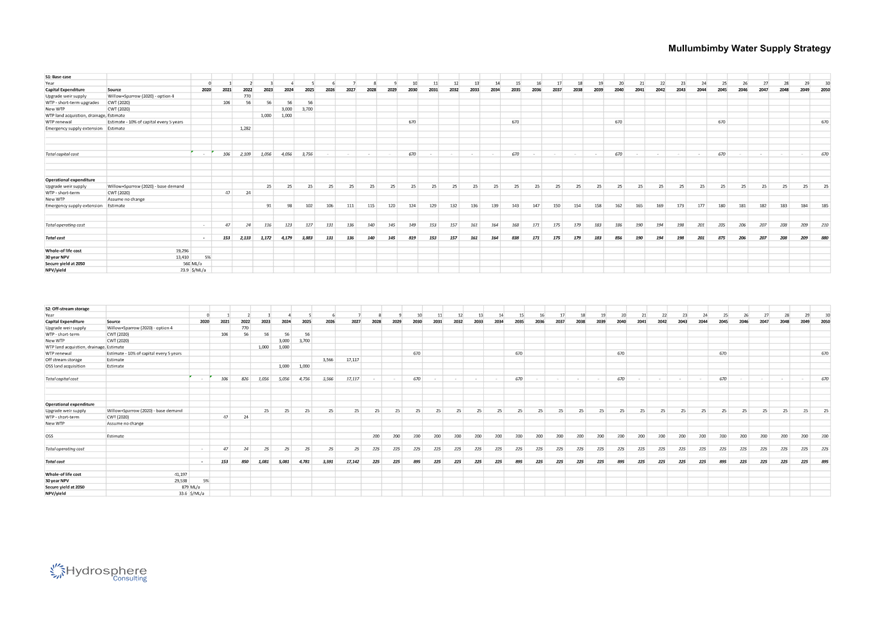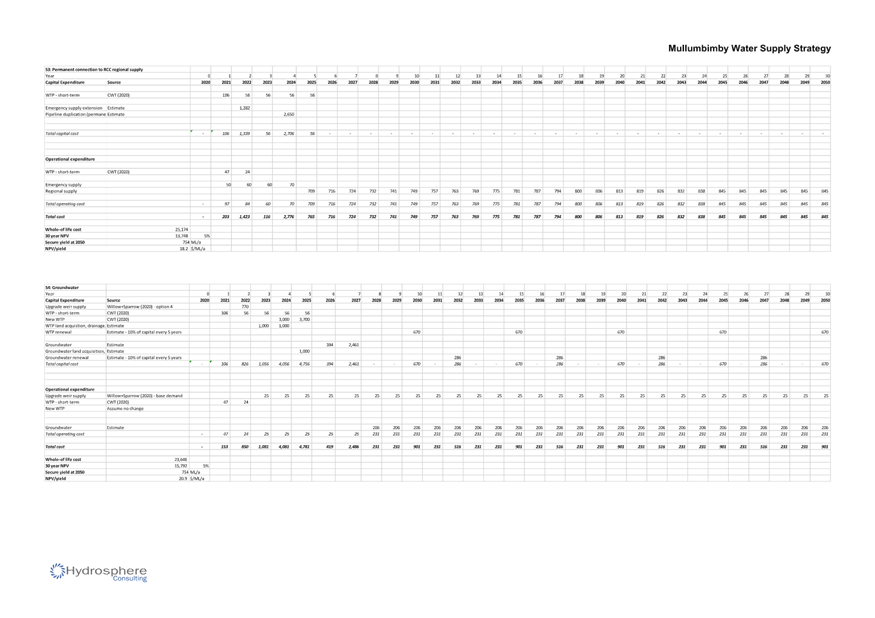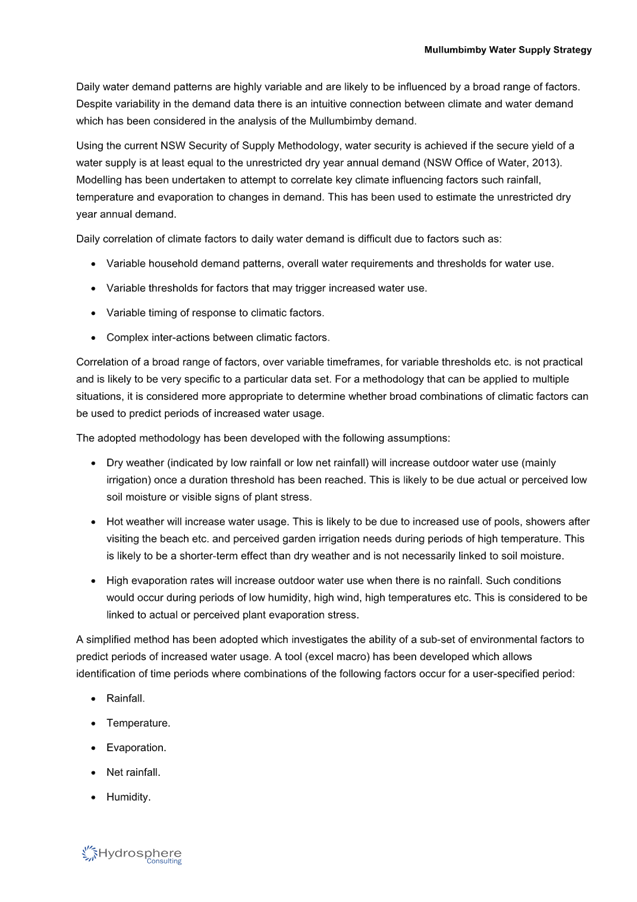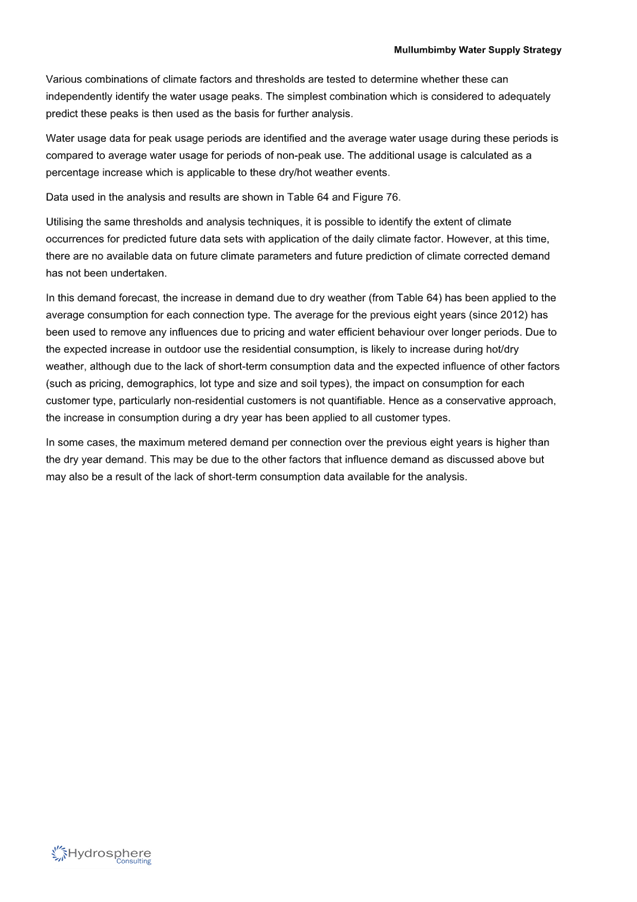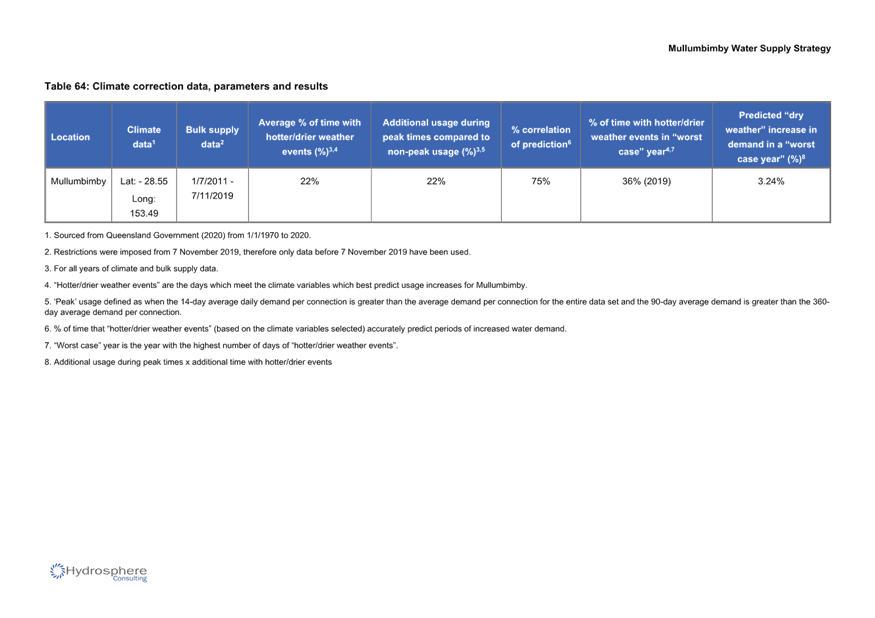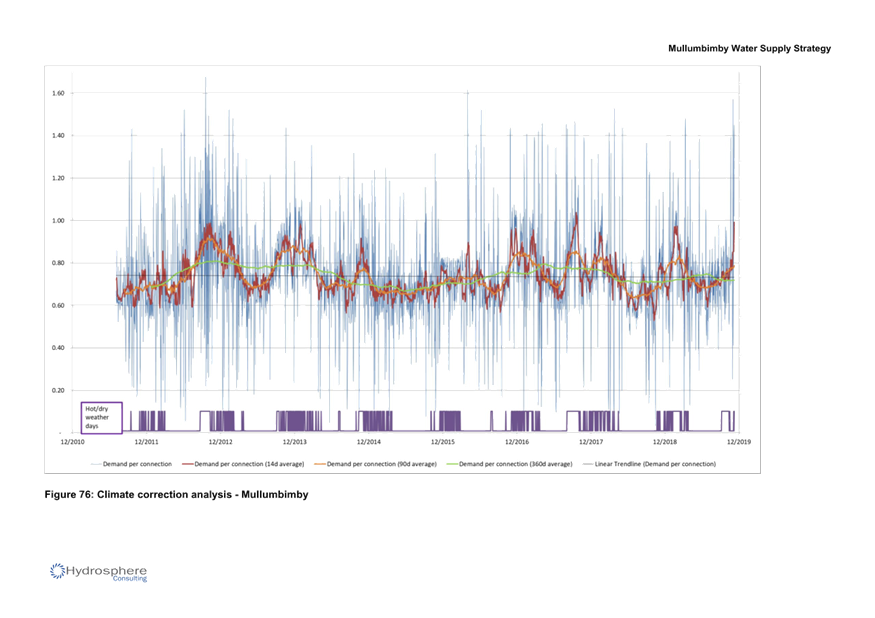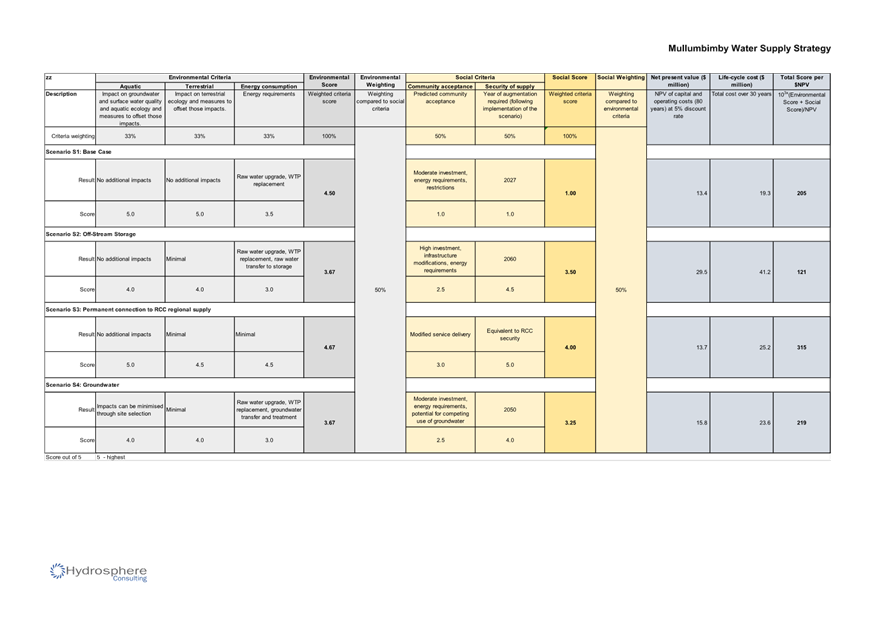Notice of Meeting
Water and Sewer Advisory Committee
Meeting
A Water and Sewer Advisory Committee Meeting of Byron Shire Council will be held as follows:
|
Venue
|
Conference Room, Station Street, Mullumbimby
|
|
Date
|
Thursday, 15 June 2023
|
|
Time
|
11.30am
|
Phil Holloway
Director Corporate and
Community Services
I2023/932
Distributed
09/06/23

What is a “Conflict of Interests” - A conflict of
interests can be of two types:
Pecuniary - an interest that a person has in a matter because of a reasonable
likelihood or expectation of appreciable financial gain or loss to the person
or another person with whom the person is associated.
Non-pecuniary – a private or personal interest that a Council
official has that does not amount to a pecuniary interest as defined in the
Code of Conduct for Councillors (eg. A friendship, membership of an
association, society or trade union or involvement or interest in an activity
and may include an interest of a financial nature).
Remoteness – a person does not have a pecuniary interest in a matter
if the interest is so remote or insignificant that it could not reasonably be
regarded as likely to influence any decision the person might make in relation
to a matter or if the interest is of a kind specified in the Code of Conduct
for Councillors.
Who has a Pecuniary Interest? - a person has a pecuniary interest in a
matter if the pecuniary interest is the interest of the person, or another
person with whom the person is associated (see below).
Relatives, Partners - a person is taken to have a pecuniary
interest in a matter if:
·
The
person’s spouse or de facto partner or a relative of the person has a
pecuniary interest in the matter, or
·
The
person, or a nominee, partners or employer of the person, is a member of a
company or other body that has a pecuniary interest in the matter.
N.B. “Relative”, in relation to a person means any of the
following:
(a) the parent,
grandparent, brother, sister, uncle, aunt, nephew, niece, lineal descends or
adopted child of the person or of the person’s spouse;
(b) the spouse
or de facto partners of the person or of a person referred to in paragraph (a)
No Interest in the Matter - however, a person is not taken to have a
pecuniary interest in a matter:
·
If
the person is unaware of the relevant pecuniary interest of the spouse, de
facto partner, relative or company or other body, or
·
Just
because the person is a member of, or is employed by, the Council.
·
Just
because the person is a member of, or a delegate of the Council to, a company
or other body that has a pecuniary interest in the matter provided that the
person has no beneficial interest in any shares of the company or body.
Disclosure and participation in meetings
·
A
Councillor or a member of a Council Committee who has a pecuniary interest in
any matter with which the Council is concerned and who is present at a meeting
of the Council or Committee at which the matter is being considered must
disclose the nature of the interest to the meeting as soon as practicable.
·
The
Councillor or member must not be present at, or in sight of, the meeting of the
Council or Committee:
(a) at
any time during which the matter is being considered or discussed by the
Council or Committee, or
(b) at
any time during which the Council or Committee is voting on any question in
relation to the matter.
No Knowledge - a person does not breach this Clause if the person did
not know and could not reasonably be expected to have known that the matter
under consideration at the meeting was a matter in which he or she had a
pecuniary interest.
Non-pecuniary Interests - Must be disclosed in meetings.
There are a broad range of options available for managing conflicts &
the option chosen will depend on an assessment of the circumstances of the
matter, the nature of the interest and the significance of the issue being
dealt with. Non-pecuniary conflicts of interests must be dealt with in at
least one of the following ways:
·
It
may be appropriate that no action be taken where the potential for conflict is
minimal. However, Councillors should consider providing an explanation of
why they consider a conflict does not exist.
·
Limit
involvement if practical (eg. Participate in discussion but not in decision
making or vice-versa). Care needs to be taken when exercising this
option.
·
Remove
the source of the conflict (eg. Relinquishing or divesting the personal
interest that creates the conflict)
·
Have
no involvement by absenting yourself from and not taking part in any debate or
voting on the issue as of the provisions in the Code of Conduct (particularly
if you have a significant non-pecuniary interest)
Committee members are reminded that they should declare and manage all
conflicts of interest in respect of any matter on this Agenda, in accordance
with the Code of Conduct.
RECORDING OF VOTING ON PLANNING MATTERS
Clause 375A of the Local Government Act
1993 – Recording of voting on planning matters
(1) In this section, planning
decision means a decision made in the exercise of a function of a council
under the Environmental Planning and Assessment Act 1979:
(a) including a decision relating to a development
application, an environmental planning instrument, a development control plan
or a development contribution plan under that Act, but
(b) not including the making of an order under that Act.
(2) The general manager is required to keep a register
containing, for each planning decision made at a meeting of the council or a
council committee, the names of the councillors who supported the decision and
the names of any councillors who opposed (or are taken to have opposed) the
decision.
(3) For the purpose of maintaining the register, a division
is required to be called whenever a motion for a planning decision is put at a
meeting of the council or a council committee.
(4) Each decision recorded in the register is to be described
in the register or identified in a manner that enables the description to be
obtained from another publicly available document and is to include the
information required by the regulations.
(5) This section extends to a meeting that is closed to the
public.
OATH AND AFFIRMATION FOR COUNCILLORS
Councillors are
reminded of the oath of office or affirmation of office made at or before their
first meeting of the council in accordance with Clause 233A of the Local
Government Act 1993. This includes undertaking the duties of the office of
councillor in the best interests of the people of Byron Shire and the Byron
Shire Council and faithfully and impartially carrying out the functions,
powers, authorities and discretions vested under the Act or any other Act
to the best of one’s ability and judgment.
BUSINESS OF MEETING
1. Apologies
2. Declarations
of Interest – Pecuniary and Non-Pecuniary
3. Adoption of Minutes from
Previous Meetings
3.1 Adoption
of Minutes from Previous Meeting.............................................................. 6
4. Staff Reports
Infrastructure Services
4.1 Byron
Shire Council Future Water Strategy............................................................ 16
4.2 Utilities
Operational Update Report........................................................................ 247
Adoption of Minutes from Previous Meetings 3.1
Adoption of Minutes from Previous Meetings
Report No. 3.1 Adoption of Minutes from Previous Meeting
Directorate: Infrastructure Services
Report Author: Dominika
Tomanek, Executive Assistant Infrastructure Services
File No: I2023/798
RECOMMENDATION:
That the minutes of the Water and Sewer Advisory
Committee Meeting held on 30 March 2023 be confirmed.
Attachments:
1 Minutes
30/03/2023 Water and Sewer Advisory Committee, I2023/474 , page 10⇩ 
Report
The attachment to this report provides the minutes of the
Water and Sewer Advisory Committee Meeting of 30 March 2023 .
Report to Council
The minutes were reported to Council on
Comments
In accordance with the Committee Recommendations, Council
resolved the following:
|
23-119
|
Resolved that
Council adopts the following Committee Recommendations:
Report No. 4.1 Review of Council's
Onsite Sewage Management Strategy 2001 and Onsite Sewage Management
Guidelines 2004
Committee Recommendation 4.1.1
That Water and Sewer Advisory Committee:
1. Notes
the draft Onsite Sewage Management Strategy and draft
Onsite Sewage Management Guidelines; and
2. Request
staff to convene a meeting with available committee members prior to
reporting documents in point 1 to Council prior to exhibition.
|
|
23-120
|
Resolved that
Council adopts the following Committee Recommendations:
Report No. 4.3 Mullumbimby
Water Supply Strategy - Members' Motions
Committee Recommendation 4.3.1
That the Committee advises
Council to:
1. Thank Hydrosphere
for preparing the report ‘Mullumbimby Water Supply Strategy, final
draft December 2021’, which was discussed at the meeting of this
Committee on 28 September 2022, and not adopt its recommendations.
2. Recognise
that Mullumbimby’s current water source at Lavertys Gap may not supply
adequate volumes of water during drought for the supply area (Mullumbimby),
but that an emergency supply is secured in the medium term via an option to
draw on Rous Water.
3. Recognise
that the current treatment system is near or has passed its use-by date.
4. Recognise
that the weir at Lavertys Gap blocks fish passage and operates under a
licence that does not require release of environmental flows to water the
downstream environment.
5. Recognise
that the weir is aging and in need of repair, and is heritage listed along
with other connected water supply infrastructure (such as the race).
6. Seek
from Rous Water a statement as to the Environmental / Social / Economic
Impacts of the addition of the 2060 population of the Mullumbimby water
supply network to the Rous water supply network.
7. Following
the meeting with representatives of Rous, consider investigation of matters
that will enable a strategy for Mullumbimby’s long term water supply
based on the following concept:
a) Lavertys Gap as the source during flows in
excess of environmental requirements;
b) water stored off-stream between the
source and Mullumbimby;
c) water treated at a new location between
the storage and Mullumbimby;
d) water delivered to Mullumbimby and
possibly beyond; and
e) maximising demand management, including
the harvesting of roof water.
8. The
investigation above to include:
a) the topography of the terrain between
Lavertys Gap and Mullumbimby, to identify potential dam sites;
b) the hydrology of Wilsons Creek and its
capacity to supply, including seasonality;
c) the impact of climate change on supply and
on demand (using CC data and methodologies in the pilot phase for local water
supply through DPE, and applied in Regional Water Strategies);
d) infrastructure needs including offtake,
storage, treatment and linkages to the town’s reservoirs;
e) environmental assessments for the creation
and operation of that infrastructure, including greenhouse gas emissions;
f) assessment of the weir at Lavertys
Gap including (i) structural integrity; (ii) means of creating fish passage;
and (iii) how this proposal enhances its heritage and preservation; and
g) economic assessment.
|
Adoption
of Minutes from Previous Meetings 3.1 - Attachment 1






Staff Reports - Infrastructure Services 4.1
Staff Reports - Infrastructure Services
Report No. 4.1 Byron
Shire Council Future Water Strategy
Directorate: Infrastructure
Services
Report Author: Cameron
Clark, Manager Works
File No: I2023/899
Summary:

This report
summarises the development of the Mullumbimby Water Supply Strategy and related
Committee and Council resolutions.
The key issue
to be addressed is water supply security (servicing existing customers and
future development over the long-term). The current demand for water in
Mullumbimby is virtually equal to the current secure yield at Laverty’s
Gap weir and if the worst drought on record were to repeat, the current supply
may not meet demand. Based on the Triple Bottom Line assessment, the most
favourable scenario is a permanent connection to the Rous regional supply.
The strategy
and water supply need urgent attention. Drafting of the Mullumbimby Water
Supply Strategy has extended well over three years with iterations and updates
as requested by the committee. Consultants and staff have addressed all
the committees’ requests to date. Additional information on the Rous
Future Water Project 2060 was presented to the Committee by Rous County Council
staff in May 2023.
A Workshop
with Councillors to discuss the Strategy is most appropriate as per Resolution
21-239.
Attachment 1:
Mullumbimby water supply strategy final draft Rev 1(2) - December 2021,
E2023/57221
Attachment 2:
D23 11088 Byron Shire Council Water and sewer advisory committee response
to Request for advice on the Mullumbimby water supply(2) - 29 May 2023,
E2023/57213
RECOMMENDATION:
1. Note
the report.
2. That
the Committee recommend to Council the preferred strategic direction of staff
to facilitate the start of detailed works.
Attachment 1 (E2023/57221); Attachment 2 (E2023/57213).
Attachments:
1 Mullumbimby
water supply strategy final draft Rev 1(2) - December 2021, E2023/57221 , page 22⇩ 
2 D23 11088 Byron Shire Council Water and sewer
advisory committee response to Request for advice on the Mullumbimby water
supply(2) - 29 May 2023, E2023/57213
, page 245⇩ 
Report
History of
Strategy Development:
The
development of the Mullumbimby Water Supply Strategy commenced in late 2019
with progress reported to staff and ET in September 2020 and March 2021.
The draft strategy was presented to the WWSAC in April and May 2021 with the
following recommendation:
Report No. 4.1 Mullumbimby Future
Water Strategy
File No: I2021/781
Committee Recommendation:
That Council:
1. Recognises that for the
Mullumbimby township there are 2 water supply issues being considered at the
moment, one being a potential drought next summer and the other being the long
term future water supply strategy.
2. Undertakes works to complete
the connection of the emergency supply to the rest of Mullumbimby.
3. In relation to a long term
strategy, firms up the management options including recognising the
environmental impacts of each option, inclusive of impacts of Rous's own
options (for options that use Rous water).
4. Aims to produce a draft long
term strategy to go to a Strategic Planning Workshop with a view to putting the
strategy on public exhibition
Detailed
design for the emergency supply pipeline is being undertaken.
Additional
information on environmental impacts was included in an update of the
Mullumbimby Water Supply Strategy (Rev 1, December 2021).
Since then,
Committee members have requested further information which has been provided by
staff, consultants and Rous County Council. A workshop with the WWSAC was
held in May 2023 including a presentation by Rous County Council on its Future
Water Project 2060 and relationship to Mullumbimby water supply as well as
responses to questions from the Committee.
Background:
Mullumbimby’s
drinking water supply is sourced from the upper reaches of Wilsons Creek. Water
is extracted from Laverty’s Gap Weir where it flows by gravity through a
‘race’ (open channel), via a mountain tunnel to the water treatment
plant (WTP).

Figure 1:
Mullumbimby water supply schematic diagram
Council engaged Hydrosphere Consulting to prepare a
long-term strategy for Mullumbimby water supply with a final draft available in
December 2021. The key issue addressed is water supply security
(servicing existing customers and future development over the long-term).
The current demand for water is similar to the secure yield at Laverty’s
Gap weir and if the worst drought on record were to repeat, the current supply
may not meet demand. Council has developed growth management strategies
for urban land, rural areas and business/industrial land which include future
development that will increase the demand for potable water.
The water supply strategy also considers the following
issues:
· Asset
condition and performance.
· Drought
management and emergency response.
· Heritage
considerations and management obligations.
The strategy assesses the security of the existing water
supply system based on its secure yield and current demand. Options to
increase the supply and reduce potable water demand were identified and
analysed and scenarios were developed using combinations of the options to
achieve the required secure yield in 2050. An integrated water cycle
management (IWCM) approach was used to compare options and scenarios and
identify the preferred supply augmentation scenario to meet the predicted 2050
demand.
Additional detail on secure yield, forecast demand and water
supply security was presented to the Committee in April 2021 (Report No. 4.2,
File No: I2021/478) and is provided in the strategy document.
Water Supply Options and Supply Scenarios
A coarse
screening assessment considered a range of new as well as previously identified
supply options. Short listed supply-side options are:
Option 1. Do
nothing (assessed for comparison with augmentation options).
Option 2. Raising
Laverty’s Gap weir.
Option 3. Off-stream
storage.
Option 4. A:
Permanent connection to the RCC bulk water supply.
B: Emergency connection to regional supply
Option 5. Groundwater.
Following a detailed assessment of these options, four
supply scenarios were developed from combinations of the options that achieve
the required secure yield over the long-term. Additional detail on options and
scenarios was presented to the Committee in April 2021 (Report No. 4.2, File
No: I2021/478) and is provided in the strategy document.
The four scenarios were compared using a triple-bottom-line
(TBL) assessment which assesses each scenario based on environmental, social
and economic criteria. Based on the TBL assessment, the most favourable
scenario is S3: Permanent connection to RCC regional supply (Figure 2). This scenario would have minimal
environmental impact and the security of supply is only limited by the security
of the RCC regional supply. There are significant cost savings in
avoiding the need to replace the Mullumbimby WTP and upgrade the weir supply.

Figure 2:
Preferred scenario S3: Permanent connection to RCC regional supply
Implementation
Plan
The following actions are required to progress the
implementation of the preferred scenario:
· Construction
of extension to emergency pipeline.
· Consultation
with the community.
· Further
consultation with Rous County Council.
· Consultation
with state government agencies.
In parallel with the implementation of the preferred
strategy, arrangements for rehabilitation and operation of the redundant assets
(weir, rising main/race, WTP) including heritage considerations should be
investigated. Supply to the trunk main customers also needs to be
determined.
Financial
Implications
The NPV of the regional scenario is the lowest of all
scenarios (initial capital cost of $4.3 million, mainly for the supply pipeline
to Mullumbimby reservoirs). There are significant capital cost savings in
avoiding the need to replace the Mullumbimby WTP, upgrade the weir supply and
construction of new infrastructure (savings of between $14 million and $32 million
depending on the scenario). However, the ongoing costs of a regional
supply ($21 million over 30 years) are expected to be higher than local
scenarios (approximately $5 million over 30 years). Further consultation
with Rous County Council is required to confirm financial arrangements for the
regional supply.
When non-financial criteria are considered, the most
favourable scenario is still S3: Permanent connection to the RCC regional
supply. This scenario would have minimal incremental environmental impact
and the security of supply is only limited by the security of the Rous regional
supply. The addition of Mullumbimby to the regional supply is unlikely to
affect the overall bulk supply strategy and the major environmental impacts
associated with the regional scheme are fixed regardless of the inclusion of
Mullumbimby in the regional scheme. Social acceptance of this scenario
has not yet been determined but when other factors such as energy consumption,
infrastructure modifications and required investment are considered, the
regional supply has significant benefit over the local scenarios.
Financial benefits would result from regional opportunities for staging of
water source development, increased flexibility in scheme development, reduced
duplication of infrastructure and sharing of costs over a larger customer
base. There is also the potential to reduce the risk of supply shortage
in the region through supply diversity, supply redundancy, climate resilience
and system flexibility. A regional scheme also allows access to a wider
range of options to improve environmental and social outcomes than a local
scheme.
Staff
Reports - Infrastructure Services 4.1 - Attachment 1













Staff
Reports - Infrastructure Services 4.1 - Attachment 2
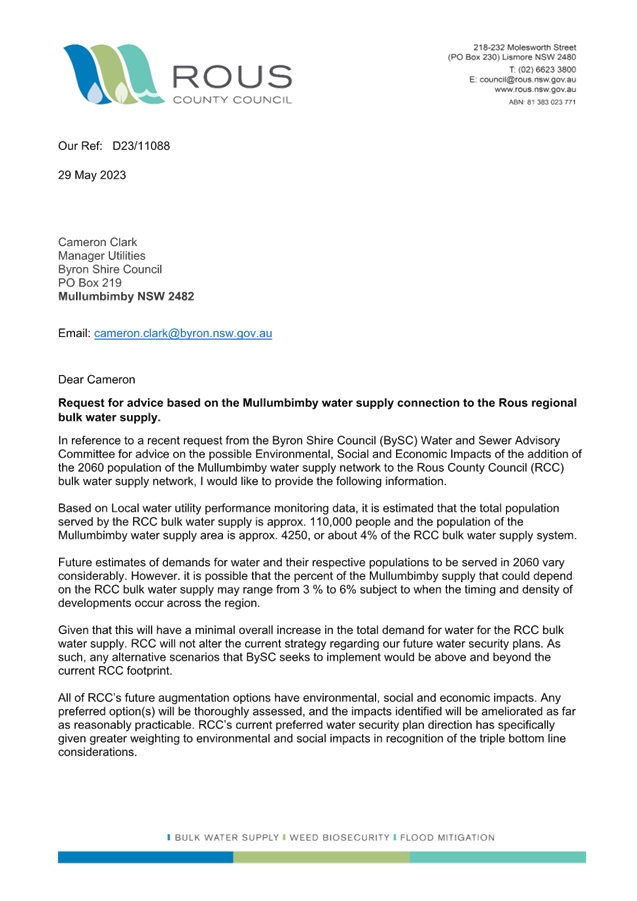
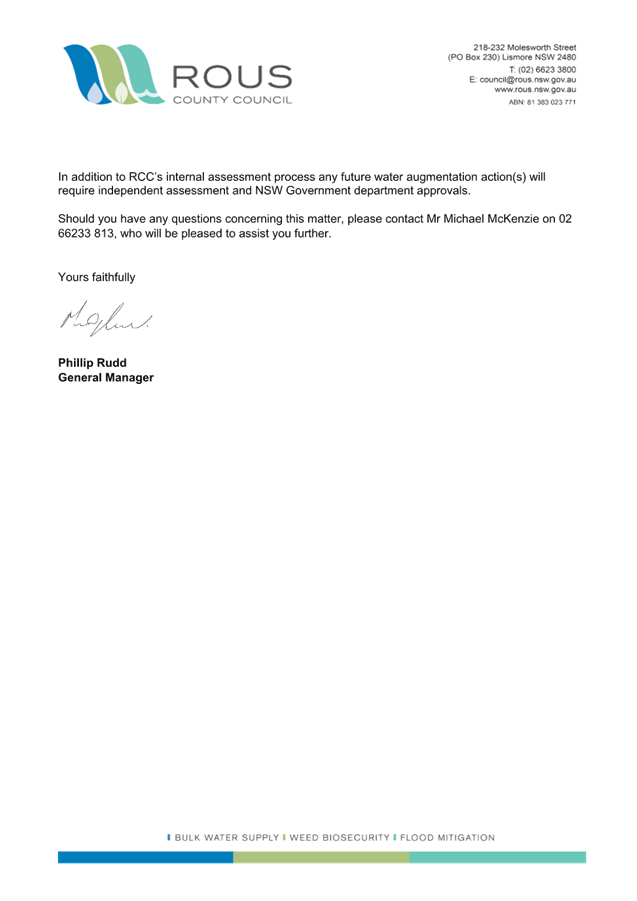
Staff Reports - Infrastructure Services 4.2
Report
No. 4.2 Utilities
Operational Update Report
Directorate: Infrastructure
Services
Report Author: Cameron
Clark, Manager Works
File No: I2023/900
Summary:
This report summaries the performance of Utilities
Department delivery for April 2023.
RECOMMENDATION:
That the Committee notes the report
Report
DRINKING WATER QUALITY
In April 2023 there were zero (0) critical limit exceedances at Mullumbimby
WTP.
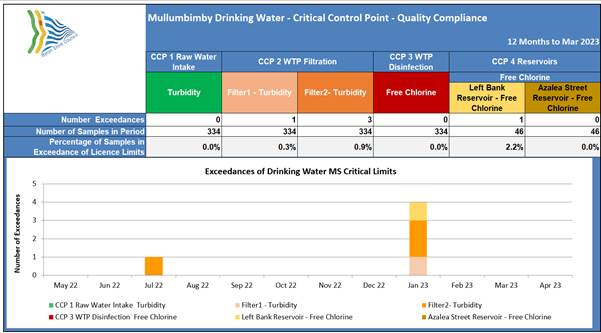
From: WaterOutlook > Reports > Special >
MONTHLY UTILITIES REPORTS > UTILITIES REPORT - Mullumbimby Drinking Water
Quality
|
CRITICAL LIMIT
EXCEEDANCES
Mullumbimby Drinking
Water Supply Critical Control Points (CCPs)
12 Months to March 2023
|
|
Date Occurred
|
Description
|
Description and Cause of
Issue
|
Action Taken to Remedy
Situation
|
Action Taken to Prevent
Reoccurrence
|
|
5/1/23 to 6/1/23
|
Turbidity Exceedance ‘
Filter 1 & 2 (3 exceedances)
|
Rainfall event on the 5 Jan 2023 raised the
Turbidity in plant process between 6 and 7 Jan 2023 (Filter 1 exceeded on one
day and Filter 2 exceeded on both days, see plots below). The finished water
on both days had Turbidity of < 0.75 NTU which is within acceptable
limits, therefore no impact on supply.
|
Jar testing and Chemical dosing corrections
undertaken throughout. Treated water returned to < 0.23 NTU by 8 Jan
2023.
|
Continued monitoring of raw water turbidity and
filter turbidity.
|
|
11/1/23 – 15/1/23
|
Chlorine Residual at Left Bank Reservoir =
0.19mg/L
|
Free Chlorine Residual result during weekly
sample collection and testing on 11 Jan 2023 was found to be 0.19mg/L at Left
Bank Reservoir outlet.
The cause of this issue was the Reservoir
filling had been isolated since 6th Jan 2023. During this time of no fresh
water entering the Reservoir and the high ambient temperatures the chlorine
residual slowly trended lower.
|
The other Reservoir in Mullumbimby had filled
then Left Bank Reservoir inlet valve was returned to normal operations. This
happened on 15 Jan 2023. During this fill 44% of the volume was filled with
fresh filtered chlorinated water from the water treatment plant. After this
Left Bank Reservoir Free Chlorine Residual was sampled as 0.75mg/L on 18 Jan
2023
|
When Reservoirs are isolated. Check Chlorine trends
and if trending downwards dose with sodium hypo to keep level within our set
parameters.
|
2.3.1 Public Health Reportable
Events
There were no water quality
reportable events in April 2023.
2.3.2 Shire
Water Consumption

From: WaterOutlook >
Reports > Special > MONTHLY UTILITIES REPORTS > UTILITIES REPORT -
Water Usage and STP Inflows Summary
2.4
STP INFLOWS

From: WaterOutlook >
Reports > Special > MONTHLY UTILITIES REPORTS > UTILITIES REPORT -
Water Usage and STP Inflows Summary
2.4.1 STP Performance
There were zero (0) STP licence 100 percentile limit
exceedances in April 2023.
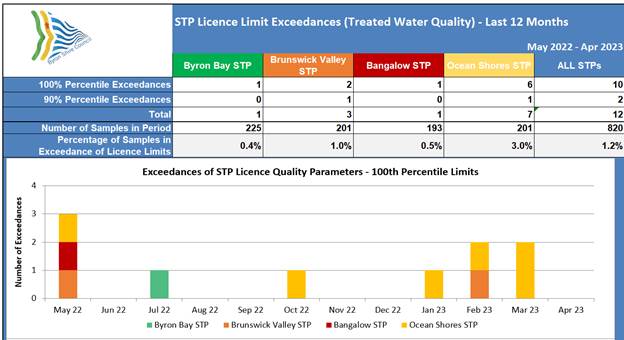
|
STP 100th PERCENTILE LICENCE LIMIT
EXCEEDENCES
(TREATED WATER QUALITY)
12 Months to March 2023
|
|
|
Date Occurred
|
Description
|
Description and Cause of
Issue
|
Action Taken to Remedy
Situation
|
Action Taken to Prevent
Reoccurrence
|
|
|
Byron Bay STP
|
|
|
06/07/22
|
Ammonia Exceedance ‘EPA 1’ of 5.19
mg/L
|
Council was notified of the exceedance by the
lab on 8/07/2022. The exceedance is believed to be due to lower than optimal
Suspended Solids (SS) levels within bioreactor. This SS drop was not
identified by instrumentation.
|
The suspended solids instrumentation was
cleaned and calibrated.
DO setpoint increased
Wasting reduced to increase SS within
Bioreactor which reduces the Ammonia levels.
|
Instrumentation planned maintenance schedule
reviewed.
Process review training with operational staff.
|
|
|
Bangalow STP
|
|
|
25/05/22
|
Ammonia Exceedance ‘EPA 4’ of 12.3
mg/L
|
Exceedance was caused by a high rainfall event
which caused high inflows to the plant. Council was notified of the
exceedance by the Lab on 27/5/2022. The exceedance is thought to be due to
effluent being pumped back from the effluent return pond.
|
The dissolved oxygen (DO) setpoints were raised
to help lower the Ammonia will monitor process.
|
The electricians have cleaned and serviced the
DO sensors to ensure correct operation and will continue to monitor.
|
|
Brunswick Valley STP
|
|
|
25/05/22
|
Faecal Coliform Exceedance ‘EPA 1’
of 750 cfu /100 ml
|
Exceedance was caused by a high rainfall event
which caused inflows to the plant of approximately 8 x Average Dry Weather
Flow (ADWF). The UV disinfection (rated at 5 x ADWF) was not able to
cope with the volume and therefore bypass of the UV system occurred.
|
Continue monitor plant performance and correct
operation during high rainfall events.
|
|
|
|
15/02/23
|
Faecal Coliform Exceedance ‘EPA 1’
of 3750 cfu /100 ml
|
Exceedance was caused by a high rainfall event
over 14th and 15 th February. Hi inflows resulted in bypass of the UV
system.
|
Outflow was retested until FC had dropped to an
acceptable level meeting License). This was achieved by 20/02/2023.
|
Monitor FC testing results and reduce inflow
and infiltration into the system.
|
|
|
Ocean Shores
STP
|
|
|
25/05/22
|
Faecal Coliform Exceedance ‘EPA 3’
of 2840 cfu /100 ml
|
On the 23/05/2022 at 1am the wetlands at Ocean
Shores STP started to bypass at the overflow weir due to extreme weather
event with high rainfall and as a result there was a treatment bypass All raw
sewage and stormwater was discharged via primary screening and UV treatment.
The estimated volume of effluent discharged over the four (4) day period was
6.6 ML. No untreated sewage was discharged into the surrounding environment.
As a result, there was a Faecal Coliform exceedance at EPA 1.
|
When flows reduced, a board was placed in the V
notch to allow bypass to be halted. Full treatment re-established.
During and after the incident, operators
monitored and adjusted treatment to correct high faecal coliform, nitrate and
ammonia levels in effluent.
• Council operators carried out
additional sampling at the effluent discharge point (EPA3) and in addition;
monitoring of water quality of the Brunswick River upstream and downstream of
the STP outfall at:
o Upstream of Ocean Shores STP at Federation
bridge Mullumbimby
o Downstream of Ocean Shores STP at Massey
Greene Boat Ramp, Ocean Shore
Bypass was reported to the EPA (Ref: EPA
13060, Reg no. 116.2022.6.1)
|
• Carried out an incident review process
in line with the Pollution Incident Response Management Plan to ensure all
procedures were adhered to and amended if required to prevent future
deviations from procedure. • Perform Inflow and Infiltration
investigation of Ocean Shores sewerage system.
• Review SOP’s associated with wet
weather events for OSSTP
|
|
|
26/10/22
|
Faecal Coliform Exceedance ‘EPA 3’
of 3640 cfu /100 ml
|
FC Exceedence caused by High Inflows to plant
due to an extreme rainfall event.
|
Council operators monitored flows and ensured
UV operating correctly. Retesting was carried out to ensure FC levels reduced
quickly after the rainfall event.
|
|
|
|
4/1/23
|
Faecal Coliform Exceedance ‘EPA 3’
of 950 cfu /100 ml
|
Cleaning of wetlands combined with heavy
rainfall caused flow of debris to hinder effectiveness of UV.
|
Operators cleaned UV and tested FC levels continuously
until license compliance achieved.
|
Ensure regular cleaning of Wetlands channel and
cleaning of UV Tubes to prevent recurrence.
|
|
|
15/2/23
|
Faecal Coliform Exceedance ‘EPA 3’
of 1120 cfu /100 ml
|
15 February 2023 a high FC count was tested at
EPA 3. This was due to a High rainfall event on 14th and 15th February.
|
Retesting was done until FC count met License.
This was achieved by 20/02/23.
|
Monitor FC results. Reduce Inflow--Infiltration
into system.
|
|
|
1/3/23
|
Faecal Coliform Exceedance ‘EPA 3’
of 4700 cfu /100 ml
|
Investigation determined that organic material
from the wetland cell is washing through the UV during high flow periods.
|
A resample was conducted on 17/3/2023 and the
result came back at 130cfu which is within normal operating range.
|
UV to be cleaned regularly to limit the organic
material building up in the unit also monitoring of the water quality going
through the wetland.
|
|
|
15/3//23
|
Faecal Coliform Exceedance ‘EPA 3’
of 730 cfu /100 ml
|
Investigation determined that organic material
from the wetland cell is washing through the UV during high flow periods.
|
A resample was conducted on 17/3/2023 and the
result came back at 130cfu which is within normal operating range.
|
UV to be cleaned regularly to limit the organic
material building up in the unit also monitoring of the water quality going
through the wetland.
|
|
|
|
|
|
|
|
|
2.4.2 EPA Reportable Events
There were zero (0) EPA
reportable incident during March 2023.
2.5 LIQUID TRADE WASTE OPERATIONS
|
COMPLIANCE STATUS
|
NUMBER
|
|
Business currently approved to discharge liquid trade waste
|
348
|
|
Registration Only Approvals
|
82
|
|
Business with applications currently in progress
|
32
|
|
Overdue for Re-approval
|
|
Business premises overdue for re-approval (LTW Approval valid
for 5 years)
|
67
|
|
Re-approval Complete (February 2023)
|
12
|
|
Operating without Approval
|
|
Businesses currently identified as operating without approval
|
28
|
|
Compliance action complete (February 2023)
|
4
|
|
Minor Non-compliances
|
|
Premises with minor non-compliances (notices for works / minor
upgrades outstanding, initial inspections for new operations)
|
64
|
|
Compliance action complete (February 2023)
|
3
|
|
Major Non-compliances
|
|
Businesses overdue for major works (grease arrestor upgrade)
|
8
|
|
Businesses currently undertaking major works (as directed)
|
4
|
|
Compliance action complete (February 2023)
|
1
|
|
Penalty Charges
|
|
Premises currently being charged penalty rates for
non-compliance
|
7
|
|
Compliance action complete (February 2023)
|
1
|
Liquid
Trade Waste New Approvals
Three (3) new Approvals
were issued in April:
· 61.2023.12.1
· 61.2023.40.1
· 61.2023.35.1
Liquid
Trade Waste Re-Approvals
Six (6) Re- Approvals were issued in April:
· Japonaise
Kitchen – 61.2023.23.1
· Mullum
Wash House – 61.2023.36.1
· Pink
Lotus Eatery – 61.2023.37.1
· Subway
Byron Bay – 61.2023.41.1
· Bang
Bang – 61.2023.31.1
· Honour
– 61.2020.44.1
Inspections
The team completed a total of Twelve (8) site
inspections in April.
Inspection
for New Approval Applications
Two (2) inspections at
premises applying for a new Liquid Trade Waste Approval were completed this month.
Overdue
compliance Site Inspections
Zero
site inspection to premises overdue for a pump out service.
Pre-lodgement
Site Inspections
One site meeting to clarify requirements for new
development applications – 61.2023.4.1
Liquid Trade Waste Customer Request Inspection
Zero
customer request inspections
Liquid Trade Waste Incidents
Zero Trade Waste Incidents Reported
Liquid Trade Waste KPI’s
|
APPROVALS
|
Re-approvals
|
8 per
month
|
|
New /
Amended approvals
|
3 per
month (Estimated)
|
|
INSPECTIONS
|
Approval
inspections
|
10 per
month
|
|
Annual
inspections
|
25 per
month
|
|
COMPLIANCE
ACTIONS
|
Generated
from inspections
|
3 per
month (Estimated)
|
Registers
The following addional Registers fall under Systems
Compliance Officer position description:
· Water Backflow Prevention – Register 65.
Approximately 20% of backflow devices are currently registered. Annual testing
is not currently being enforced due to staffing resources.
· Private Sewer Pump Stations – Register 34
· Private Hydrant - Register 68
· We are storing backflow prevention device
commissioning reports as they come in.
2.6 TREATED EFFLUENT & REUSE WATER MANAGEMENT SYSTEMS
2.6.1 Byron Wetlands Water
Quality
The data below shows the assimilative and polishing
capacity of Byron Wetlands for the February to April 2023 period.
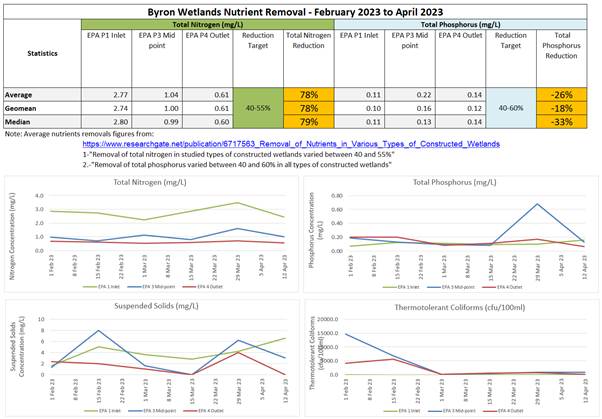
From: WaterOutlook >
Reports > Special > MONTHLY UTILITIES REPORTS > UTILITIES REPORT -
Wetlands Performance
The assimilative and polishing capacity is
demonstrated by the nutrient reduction trend between EPA1 and EPA 4 for
nitrogen and phosphorus concentrations as follows:
· Total Phosphorus - an
average increase of 0% to 33% is seen between EPA1 and EPA4, this
increase is not in line with the reduction seen in the literature of around
40-60%. It is noted however, that this result is a factor of very low
Phosphorus levels entering the wetland, leaving very little scope for
improvement. In addition, small variations in concentrations are
amplified due to the way the target is calculated. Discharge
concentrations of 0.12-0.14 mg/L are still significantly below the EPA limit
for discharge from the STP of 1.0 mg/L.
· Total Nitrogen - an
average reduction of between 78% and 79% is seen between EPA1 and EPA4.
This is significantly better than that seen in the literature of around 40-55%
2.6.2 Byron Wetlands (BBIWMR) Water Quantity
Key observations from monitoring and modelling data:
- Rain appears to be a
substantial driver of increased water flows into and out of the BBIWMR system,
as well as ground water levels.
- There is still
untapped reuse potential at the 24 ha site. This system is in the process of
being reactivated.
Note: The Additional Flow Path (AFP) project will soon
become operational. Monitoring systems and water-balance modelling will be
updated to capture the AFP contributions to the effluent management system.
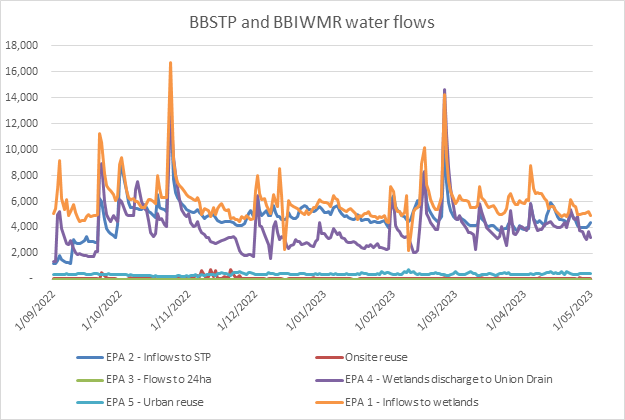
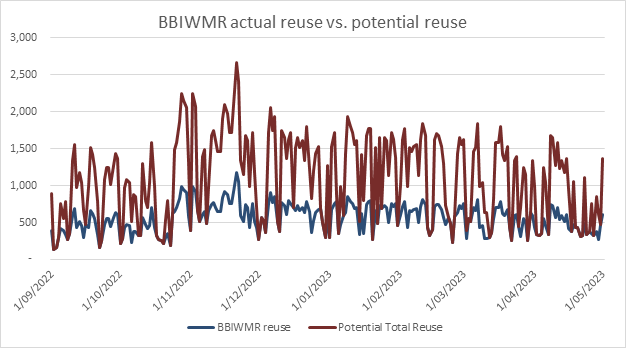
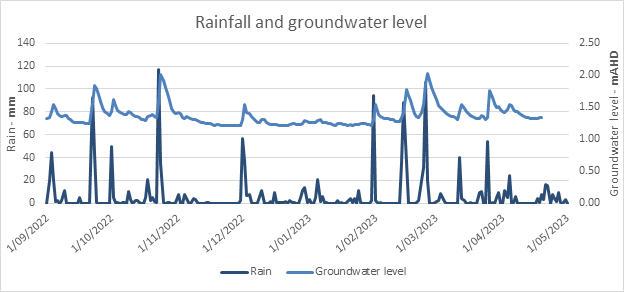
2.6.3 Wetlands
Operation
Monthly inspections and
checklists have been completed by AWC in April.
Bird Buddies have observed an
increase in waterbird numbers in recent surveys.
Water levels have been higher due
to rainfall. Investigations and monitoring into the acidic water and sulphurous
smell within the lower section of Cell D have concluded that lowering of water
levels has disturbed ASS materials. Careful management of flows through the
system and monitoring has enabled the issue to be contained. Reintroduction of
effluent into Cell E and rainfall has buffered and neutralised the disturbed
ASS materials.
The DPI research team continued
monthly monitoring. The reduction of salvinia extent has been sustained
in Cell H with large areas of open water providing habitat for waterbirds.
There also appears to have been some impact on the Salvinia presence in Cell I
due to weevil activity.
Meetings with Peter Boyd and Jim
Rogers have been completed to discuss and integrate mowing activities with
feral animal management on the site. Aruma is providing mowing schedules to
ensure that access can be maintained during trapping
activities.
Discussions are ongoing Planit
and Safe Group regarding monitoring requirements and the additional flow path
have been completed. Progress is being made to complete the assessment of
recent monitoring in the Industrial Estate drain and rainfall. Logger locations
have been discussed in both the 24ha and Cell J.
2.6.4 Biosolids
Management
The table below shows the total biosolids removed from the STP sites and
applied to land for the last 12 months from May 2022 until April 2023.

From: WaterOutlook > Reports > Special >
MONTHLY UTILITIES REPORTS > UTILITIES REPORT - Biosolids Movements
2.6.5
Recycled Water Management Strategy
Update on project
progress:
As per resolution from December 2022 ET
meeting, investigations are being carried out to upgrade urban effluent reuse
treatment and management systems. A follow-up report will be presented to ET in
May/June 2023.
Cost-benefit assessment of future options for
effluent reused is being undertaken.
2.7 DEVELOPMENT APPLICATIONS
ET Assessments
The graph below illustrates the ET
assessment profile from March 2022 to April 2023. In April 2023, the systems
planning team required 36.9 days on average to complete ET assessments.

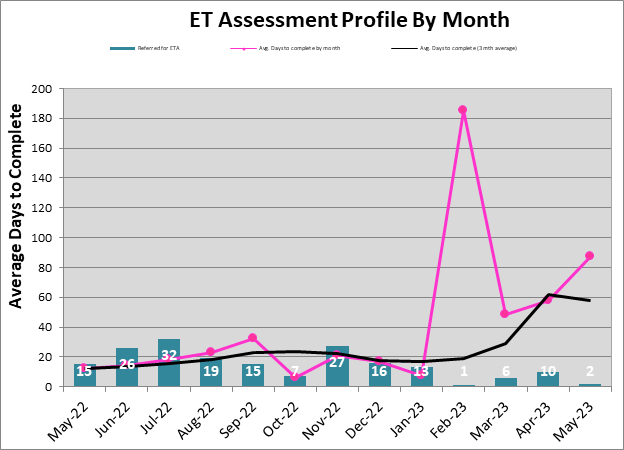
Overview
· Resources are depleted due to staff leave.
· Assessments are being completed on an ‘as
needs’ basis.
· 10 ET
assessments were finalised in April.
· 12 referrals are
on hold due to requested additional information from planners/applicants.
2.8 PLANNED & REACTIVE ASSET MAINTENANCE
Planned Maintenance
Overall planned maintenance data
is not available for the month of April. However, the long-term average
compliance for the last twelve months is just below target at 79%
(target of 80%).
Notes:
· The Sewer Operations team have continued to recover from
staff shortages and now have an above target compliance rate.
Reactive Maintenance
The reactive maintenance data is
not available for the month of April.
Task Closeout
There are is now a reduction in
aged reactive maintenance tasks, due to a concerted effort to close out aged
CRMs as we move across to the Assetic maintenance system.
2.9 ASSET MAINTENANCE
Utilities Asset Maintenance Software Review
The full functional requirements are contained within Doc Ref:
E2021/47655: 24.2021.11.1 Appendix A - Maintenance Software Functional
Description DRAFT Feb2021
Project Status –
Assetic Rollout
Utilities are in the process of moving to new maintenance
management software Assetic.
1. The Water Reticulation team are now
live in this system and using it to manage all planned and reactive
maintenance.
2. The Rates team are now using the
Assetic maintenance system to manage Property meter changes (installs and
removals) as well as special meter reads.
3. The Electrical team have now been
trained in the software. ‘Go Live’ for this team was scheduled for
April but due to leave and ANZAC holiday this will be actioned by the end of
April.
4. The next team to be rolled out is the
Treatment team in May 2023. This team’s planned maintenance
schedule has been built in Assetic. Review of this sections CRM
categories are currently under review for integration into the system.
5. The Assetic implementation team will be
training in Power BI in May 2023. This will enable key information and KPIs to
be available to managers, without the need to log into the Maintenance system.
Example of Home
Screen Profile
in Assetic for the Rates Team
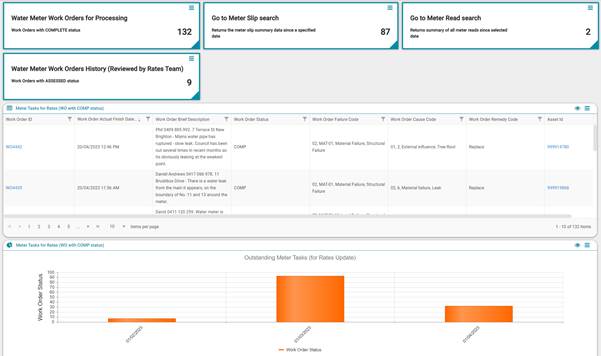
General
Asset Management Improvements
Water Mains and Reuse Mains:
· Predictor™
model build underway.
Reuse Access Points and Reuse
Filling Stations:
· Predictor™
model build underway.
Sewer Vacuum Pods:
· Predictor™
model build underway.
Sewer Pump Stations:
· All
latest capital works condition information loaded to the asset register.
Predictive model to be updated.
· All
latest pump change out detailed information loaded to the asset register.
Utilities Digital Asset
Management Plan (DAMP):
· DAMP
second draft build continuing.
Flood Damage:
· Laverty’s
Gap Weir – PWA provided the Design Scope document to review. Scope
accepted by BSC. Concept design underway. Biodiversity walk found no issues.
End of June concept completion.
· Gravity
Sewer Mains – We have had to reduce scope of project (1 x asset only)
to comply with funding amount. Interflow have confirmed they will honour the
current submission with the removal of asset 32792 from the scope. Start date
to be mid-June 23.
· Mullum
Water Mains Extension – Geotech data has been forwarded. Survey
engaged to Byron Bay Surveying. Kick off meeting for surveying occurred on the
27th April. Survey to start first week of May.
· Water
Mains Replacement (Kolora Way) – Current design route is required to
have an EIS. This will hold project back 6-12 months. Alternate route to the
southern side of the bridge is now being considered.
· SPS
Switchboard – Timeline of projects as follows:
o SPS 4001 –
Fully Completed.
o SPS 3016 –
New board commissioned. Only stairs and handrails outstanding.
o SPS 4013 –
Only stairs and handrails outstanding.
o SPS 4006 –
Platform completed. Awaiting switchboard install (has arrived). Stairs and
handrails outstanding.
o SPS 5005 –
Not started. Switchboard has arrived.
o Uploaded 47
(switchboards residing in 1:100 yr + 0.5m freeboard) condition assessments,
Lat_Longs and switchboard standard drawings to Public Works SharePoint. Public
Works has surveyed all 47 switchboard heights.
· Pressure
Sewer Boundary Valve Kits – Site audit has now been completed. 7 x
dwellings require more detailed inspections. Scope finalising. RFT getting
close to issue.
· Telemetry
Data Gathering – Purchase Orders created for the 47 x SPS
switchboards that sit in the flood layer regarding RTU upgrade project. Some
long lead-times on equipment are expected.
· Electrical
Grid Review (OSSTP) – Awaiting Essential Energy feedback to finalise
report. Gen set appears to be recommended solution.
STP
inspections:
· Condition
assessment and audit inspections at West Byron STP have been fully completed.
All data and photos received.
· Condition
assessment and audit inspections at Brunswick Valley STP have been fully
completed. All data and photos received.
· Condition
assessment and audit inspections at Bangalow STP have been fully completed. All
data and photos received.
· Condition
assessment and audit inspections at Ocean Shores STP have been fully completed.
All data and photos received.
· AWC
have completed the wetland assets condition assessment and audit. Data and
Shapefiles are currently being added to GIS system.
WTP inspections:
· Condition
assessment and audit inspections at the Mullumbimby WTP have been fully
completed. All data and photos received.
General Asset Management:
· Annual
Insurance renewals data has been corrected for Utilities assets.
2.10 UTILITIES SUSTAINABILITY
Utilities Assets Energy
Efficiency Upgrades Validation
Utilities have undertaken many
energy efficiency upgrades to the waste water network. These upgrades have
produced verifiable financial and environmental benefits for council. The
Sustainability Officer Utilities (SOU) has been tasked with quantifying and
reporting on these savings. In order to assess an assets energy efficiency
while taking into account load variations due to population fluctuations and
weather variability the SOU has utilised a kWh/kL energy performance metric.
SPS5009 which is one of the
largest sewer pump stations in Byron’s sewer network had a jockey pump
installed in 2015 to handle Average Dry Weather Flow (ADWF) conditions while
leaving the larger pumps in reserve for heavy rain events. When the SOU ran
energy performance metrics over the site data it became apparent that site
energy efficiency was not good and was getting worse. This prompted the removal
and servicing of the jockey pump. The serviced jockey pump was reinstalled on
the 12/5/22 and the graph below shows that when operating per design the jockey
pump halves the site energy usage saving council around $50,000pa on
electricity charges alone.
Quarterly Utilities Assets Energy Performance Monitoring
This table and Key Points is
updated quarterly/annually. The tables below display the Utilities sites that
have had the largest increases in electricity usage from Q2 2021/22 to Q2
2022/23. It also applies the standard energy
efficiency metric of kWh/kL which demonstrates these sites power consumption
per units of influent flow. This metric allows sites to be identified for
investigation and optimisation through CRM requests to the Principal Engineer
System Planning and the Operations Engineer. Once CRM requests are made sites
are monitored and will remain as unresolved items in the IS monthly report
until the identified anomalies have been rectified.
|
|
QUARTER 1 - 2021-2022
|
QUARTER 1 - 2022-2023
|
INCREASE
2021-22 to 2022-23
|
|
Asset
|
Electricity
|
Inflow
|
Efficiency
|
Electricity
|
Inflow
|
Efficiency
|
|
|
|
(kWh)
|
(kL)
|
(kWh/kL)
|
(kWh)
|
(kL)
|
(kWh/kL)
|
kWh
|
kWh %
|
kWh/kL %
|
|
SPS3002
|
20,481
|
NA
|
NA
|
27,966
|
NA
|
NA
|
7,485
|
37%
|
NA
|
|
SPS3001
|
30,266
|
NA
|
NA
|
36,480
|
NA
|
NA
|
6,214
|
21%
|
NA
|
|
SPS3023 (Depot)
|
30,250
|
NA
|
NA
|
48,575
|
NA
|
NA
|
18,325
|
61%
|
NA
|
|
SPS3004
|
3,389
|
NA
|
NA
|
7,153
|
NA
|
NA
|
3,764
|
111%
|
|
|
SPS4000
|
8,525
|
165,136
|
0.05
|
14,525
|
95,429
|
0.15
|
6,000
|
70%
|
300%
|
Key Points
· SPS3001 and SPS3002 again showed
significant increases in energy usage but Inflow data was still unavailable so
a performance metric could not be applied. The missing data will require
further investigation.
· SPS3004 experienced a 111% increase in
energy usage but while derived flow was unavailable in Water Outlook pump
runtimes had doubled correlating with the increase in energy usage.
· SPS4000 experienced a 70% increase in
energy usage and 300% increase in kWh/kL. This site will be investigated further.
Follow Up
· At the request of the Principal Engineer
Systems Planning the SOU is endeavouring to separate the electricity billing
for Depot Training Room and SPS3023. As a part of the sewer network SPS3023
should have its own dedicated electricity bill and apparently an electricity
allowance is included in the lease agreement for the Depot Meeting Room
Building that is used by Utilities staff.
· Electricity account information for all
Utilities sites is being validated and corrected where necessary in order to
ensure data accuracy for the implementation of Utilities wide rolling energy
performance metrics.
· SPS5003 pump 1 has been recommissioned
after servicing. Electricity usage is down by 25% compared to last year (pre
flood), derived flow rates and pump runtimes are proportionally down.
· SPS4000 is continuing to be investigated.
Historical data suggest that this SPS is significantly susceptible to I&I
and this may be the major cause for power use anomalies.













































































































































